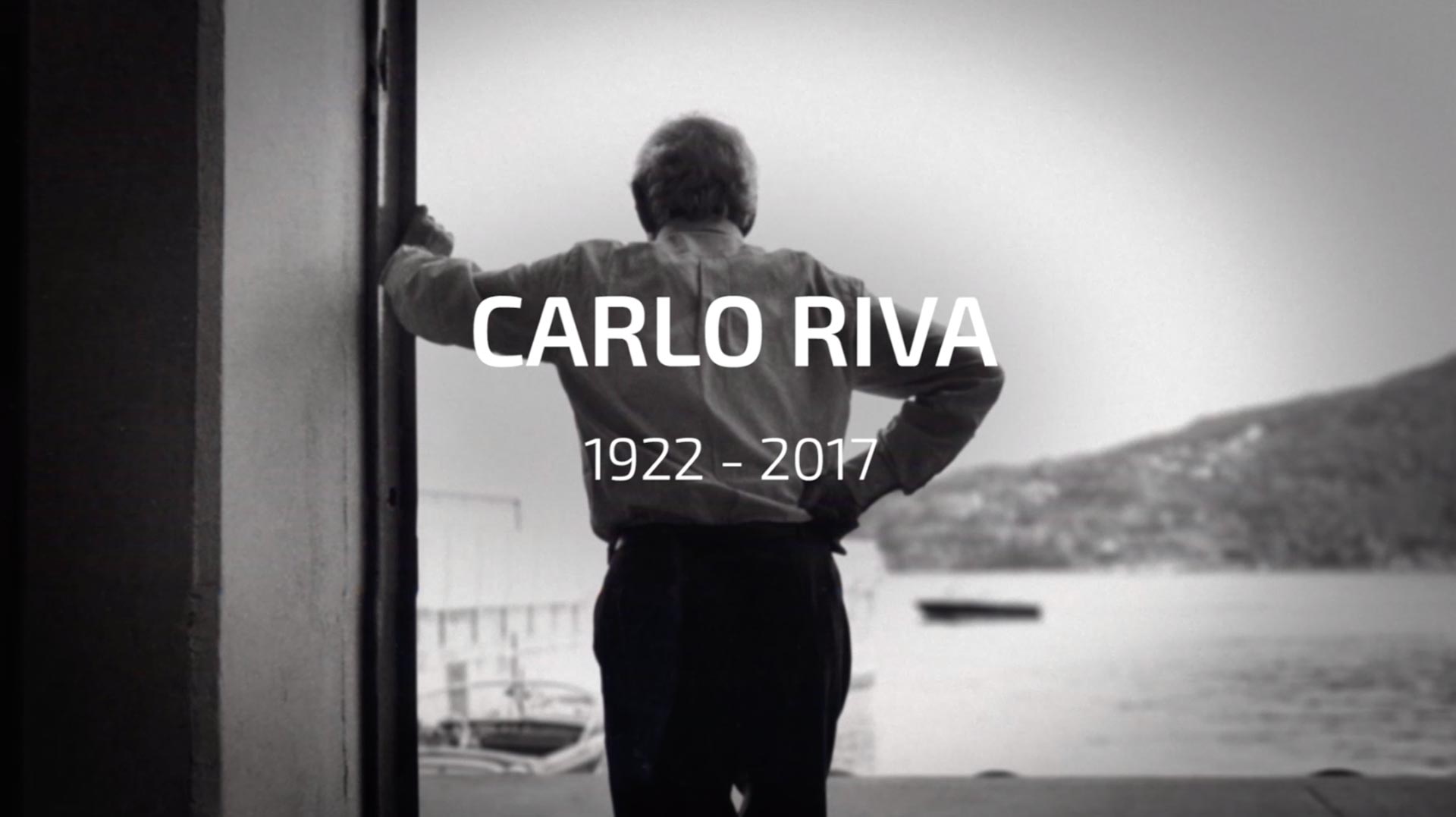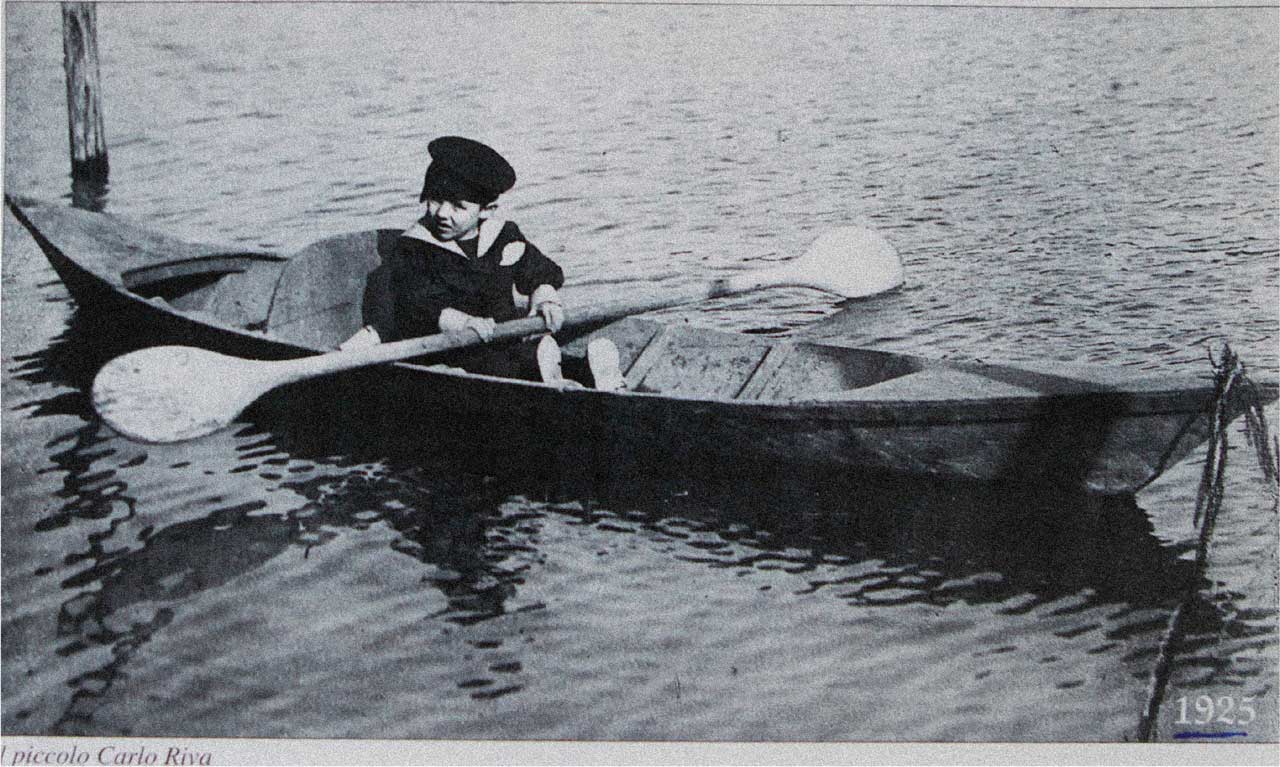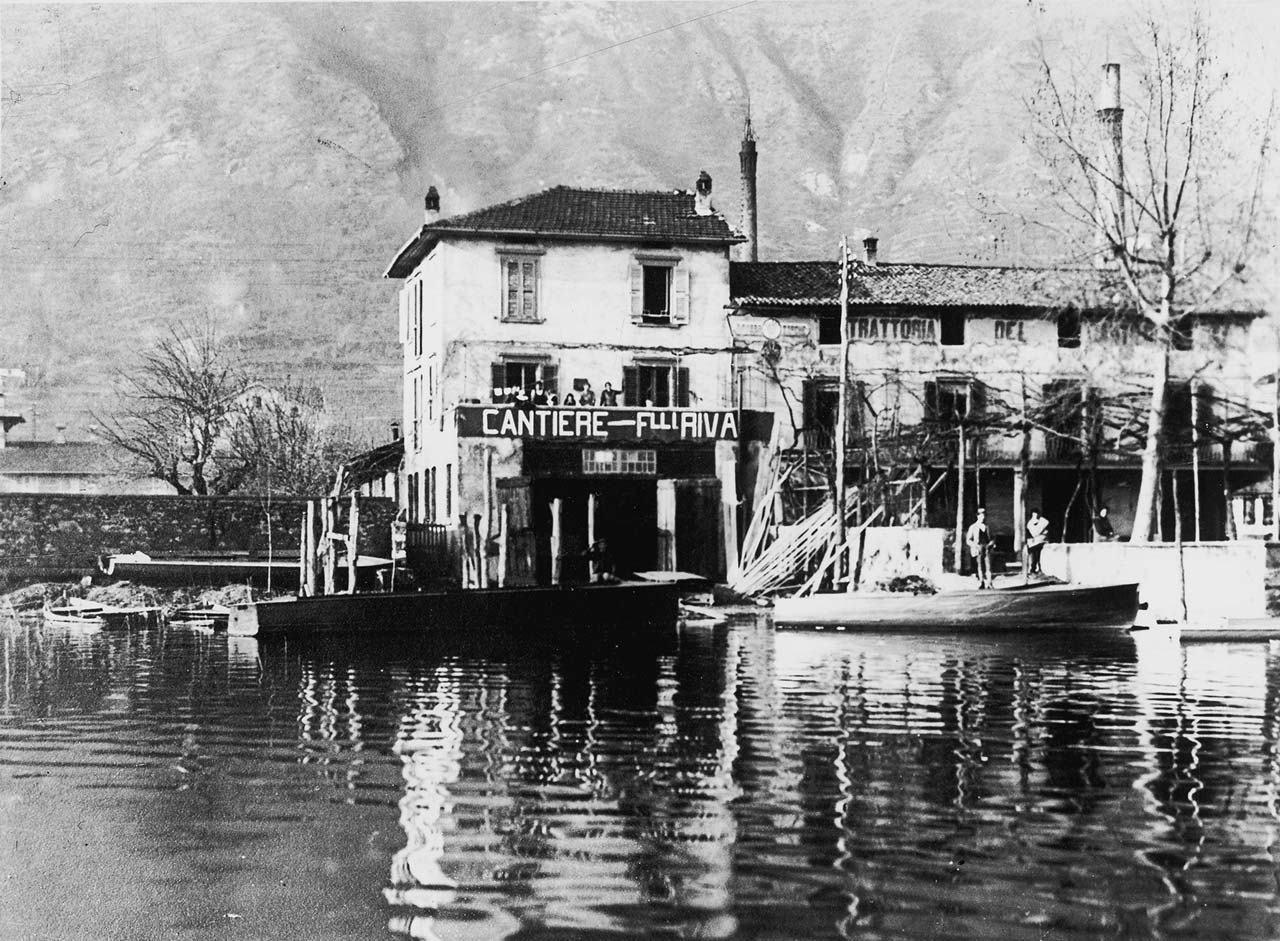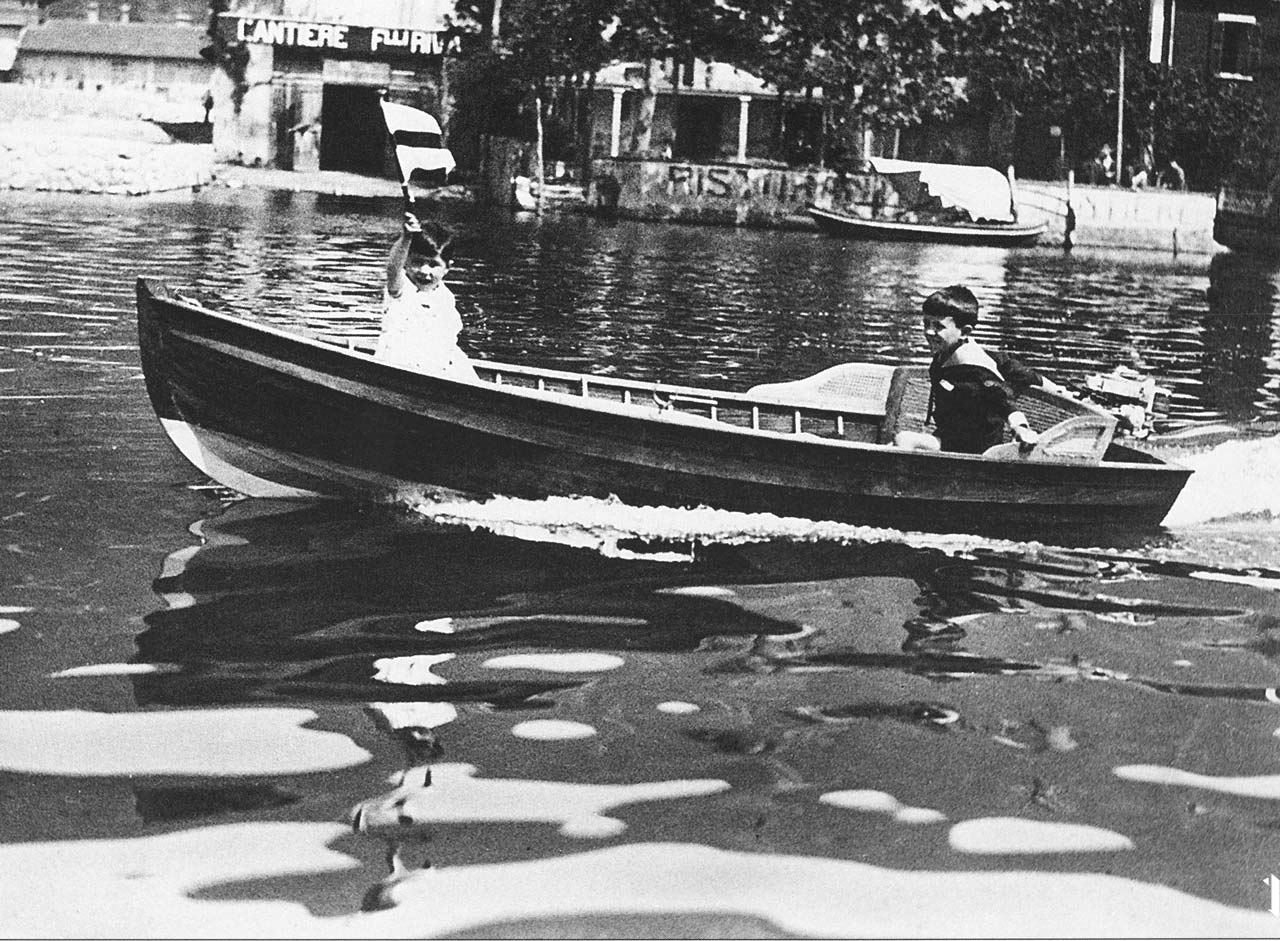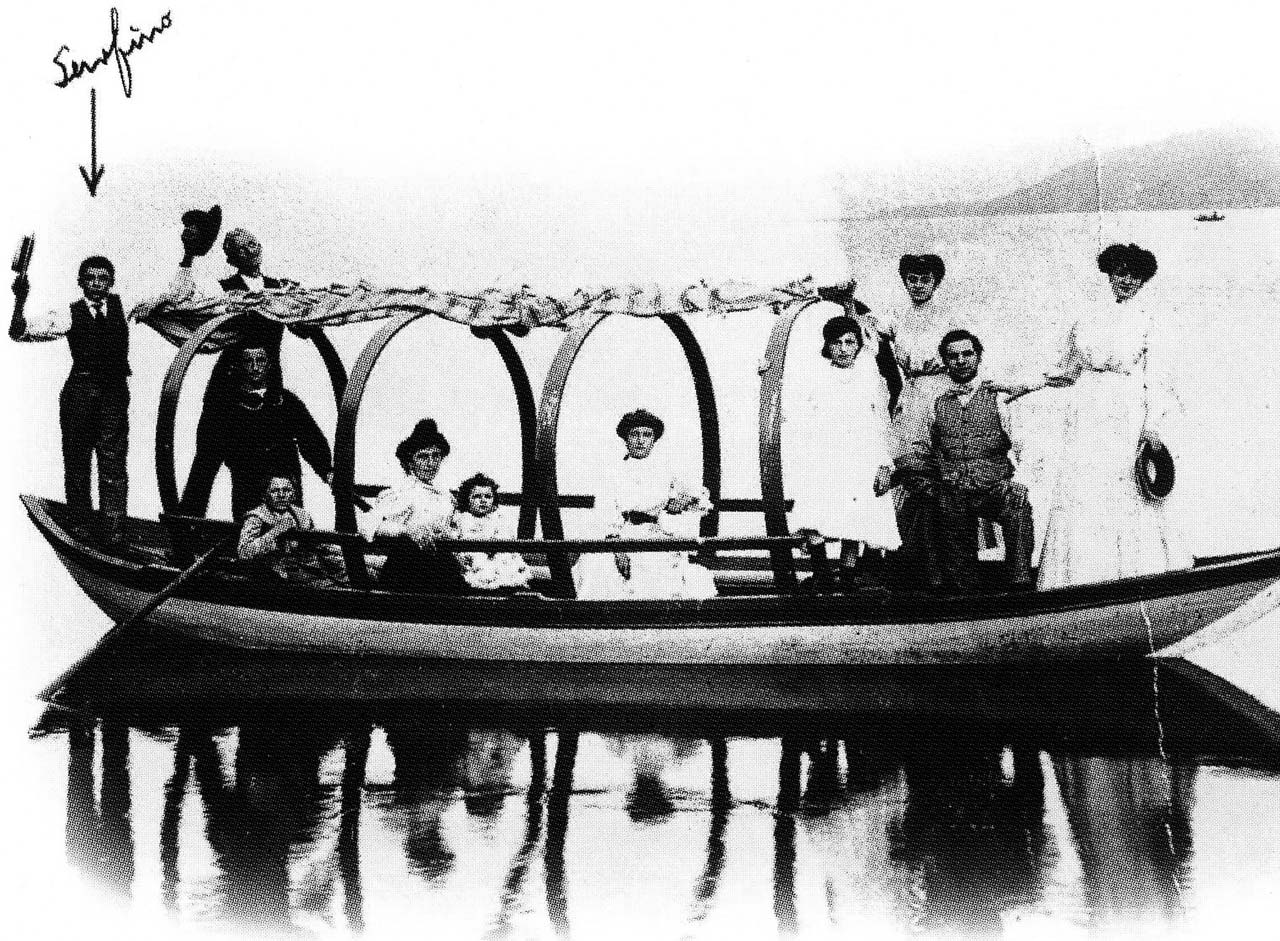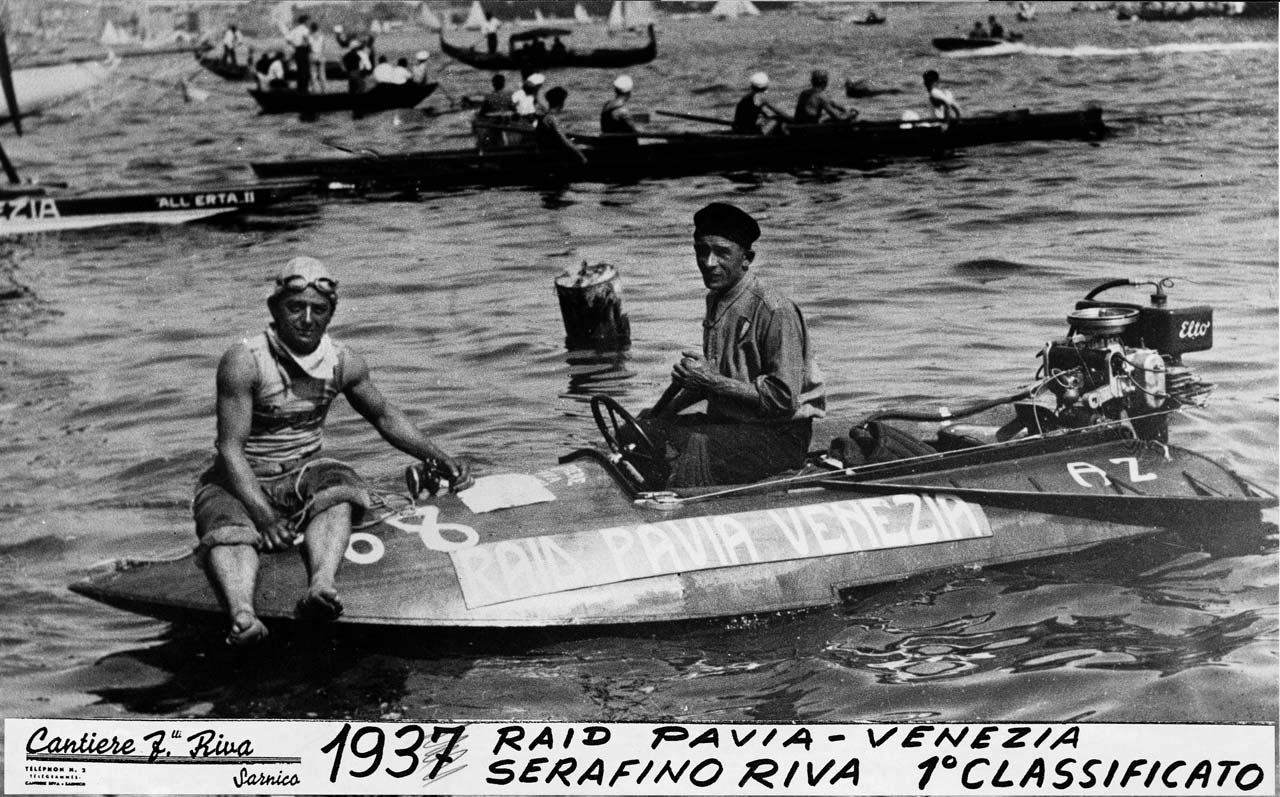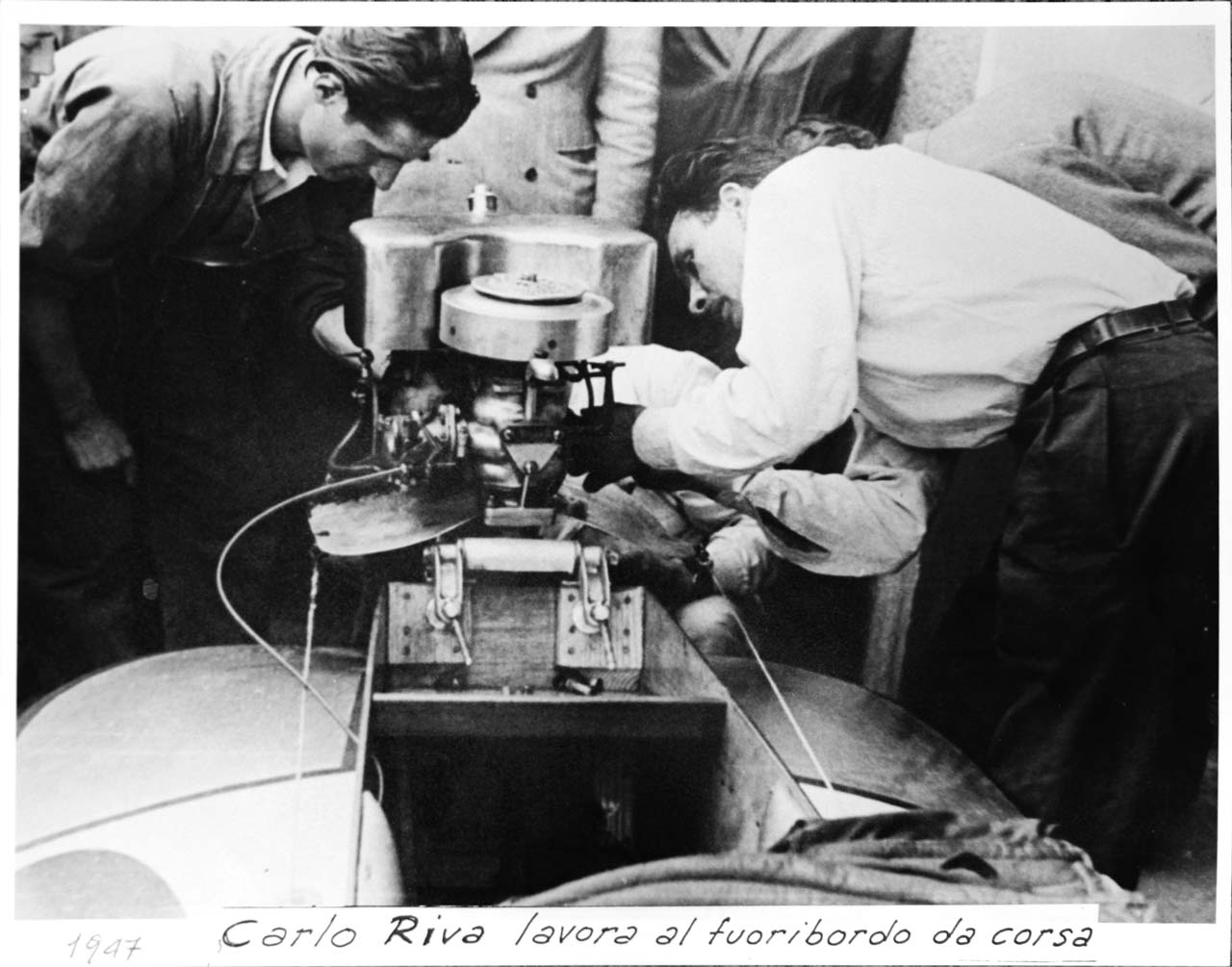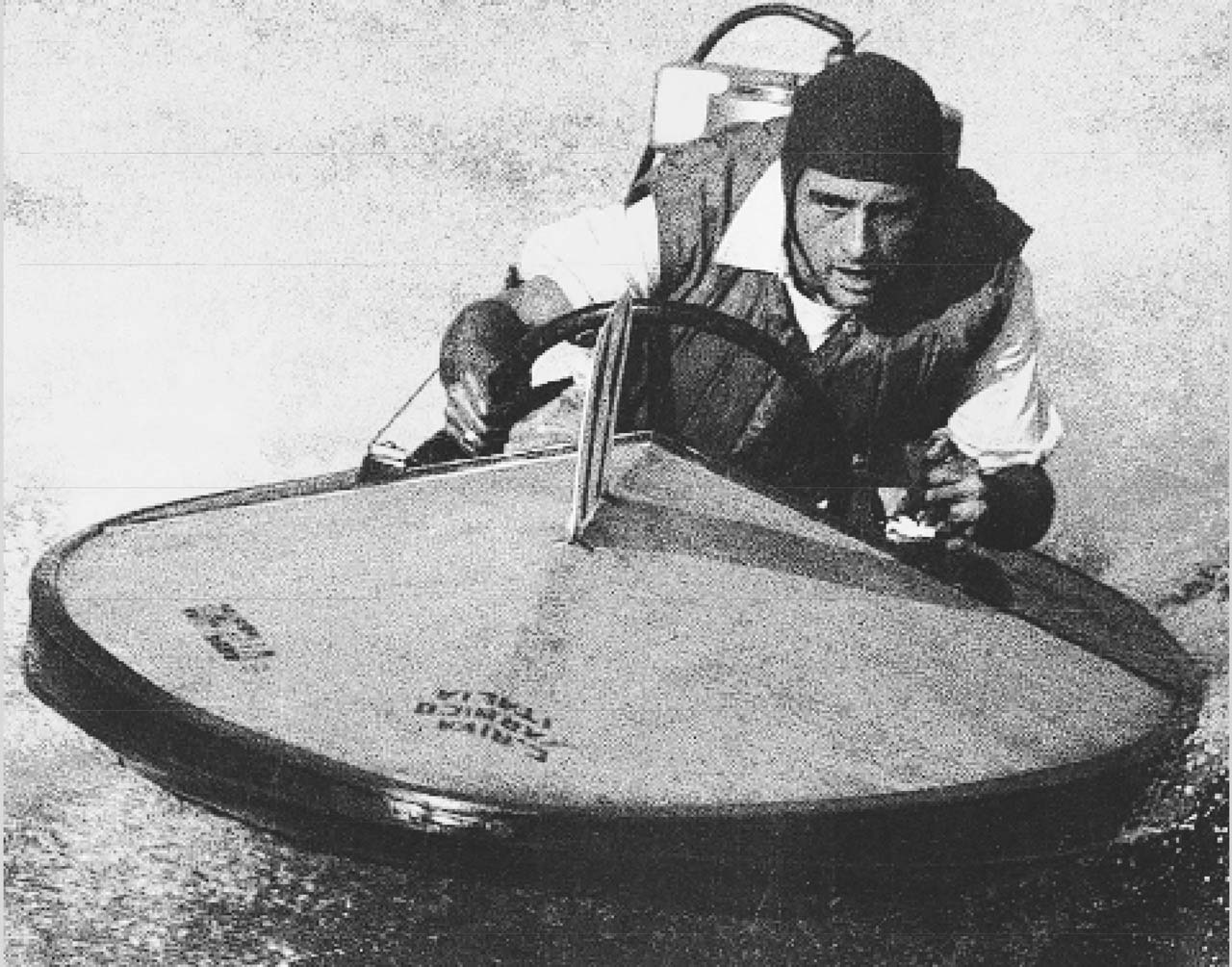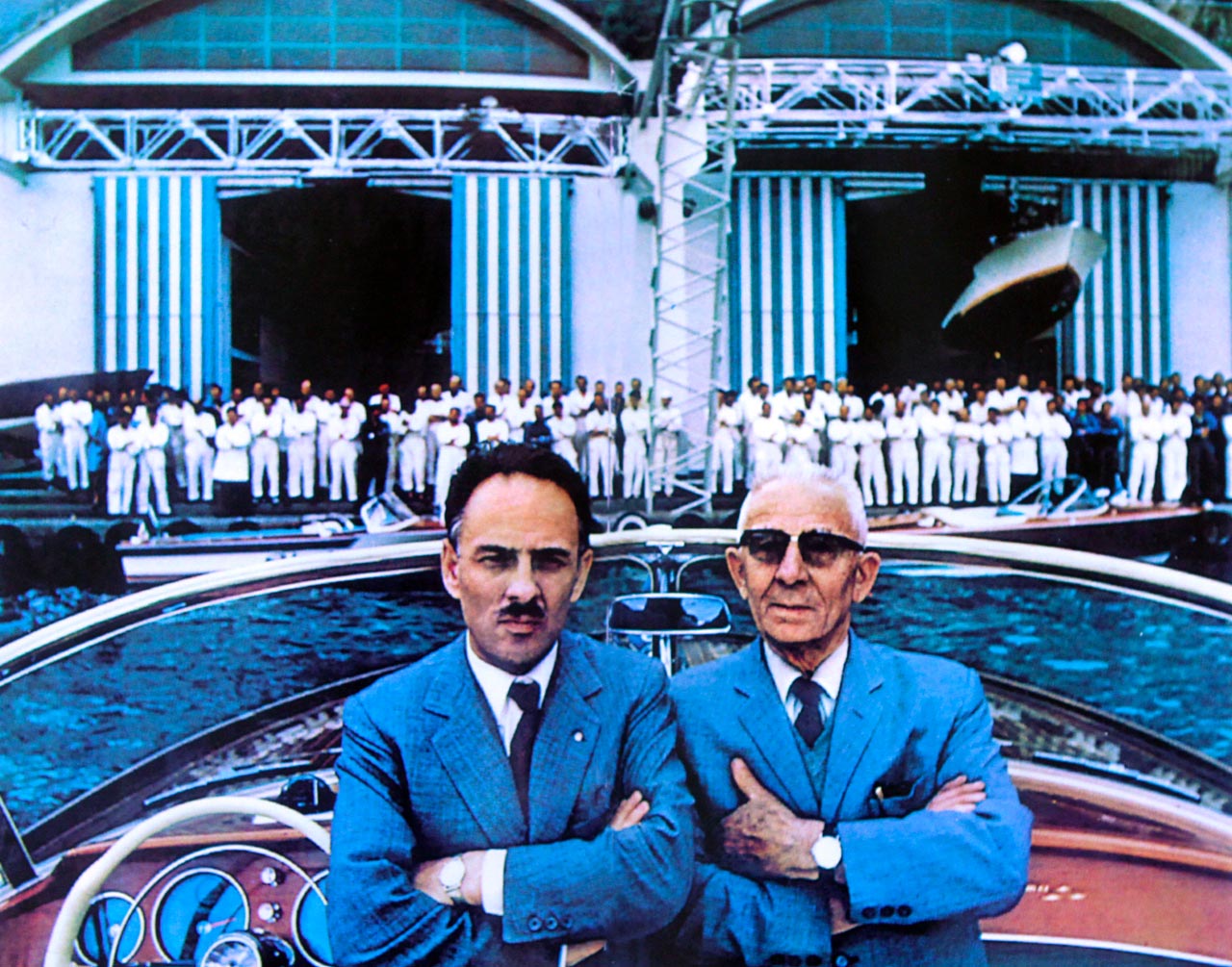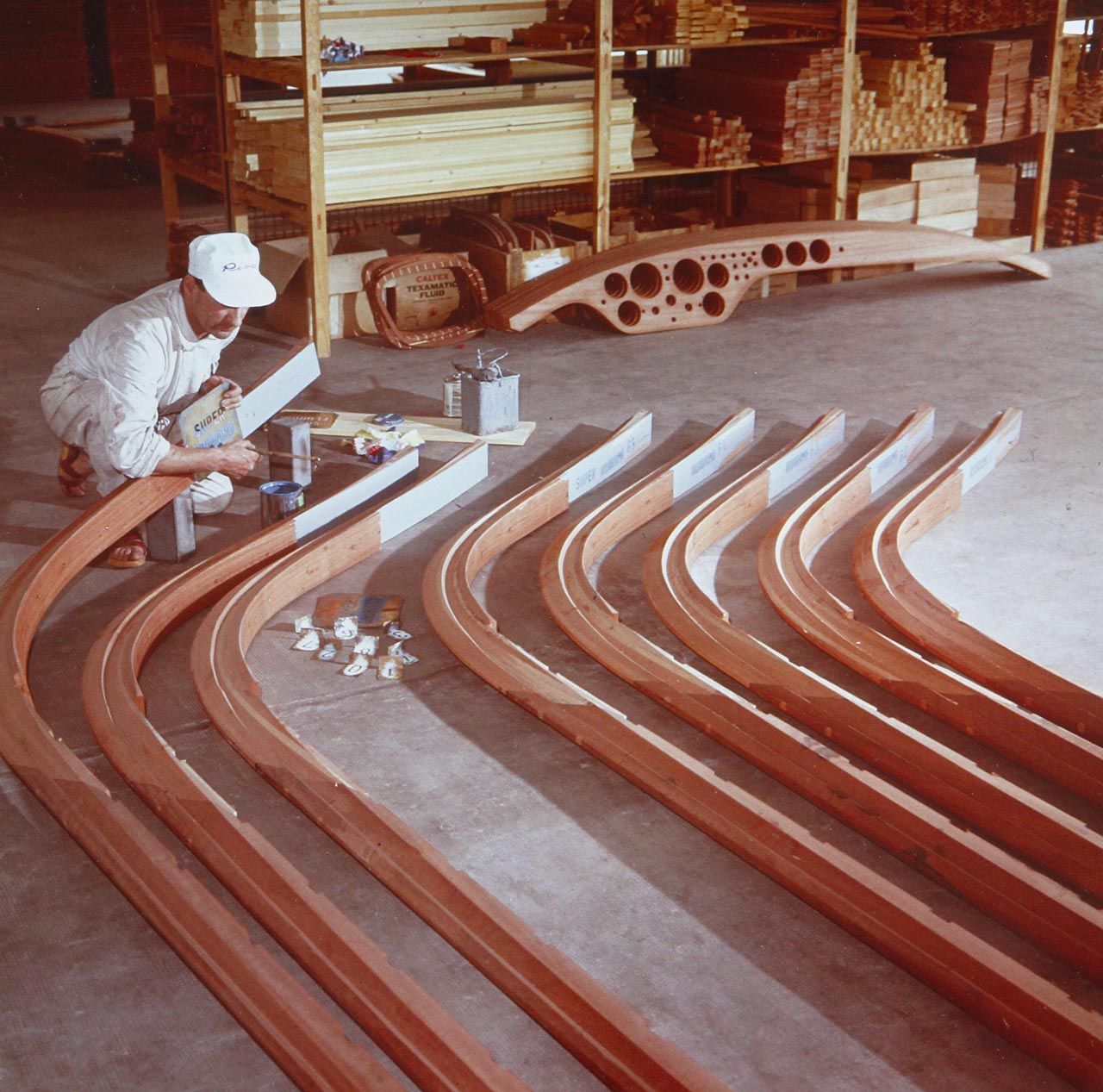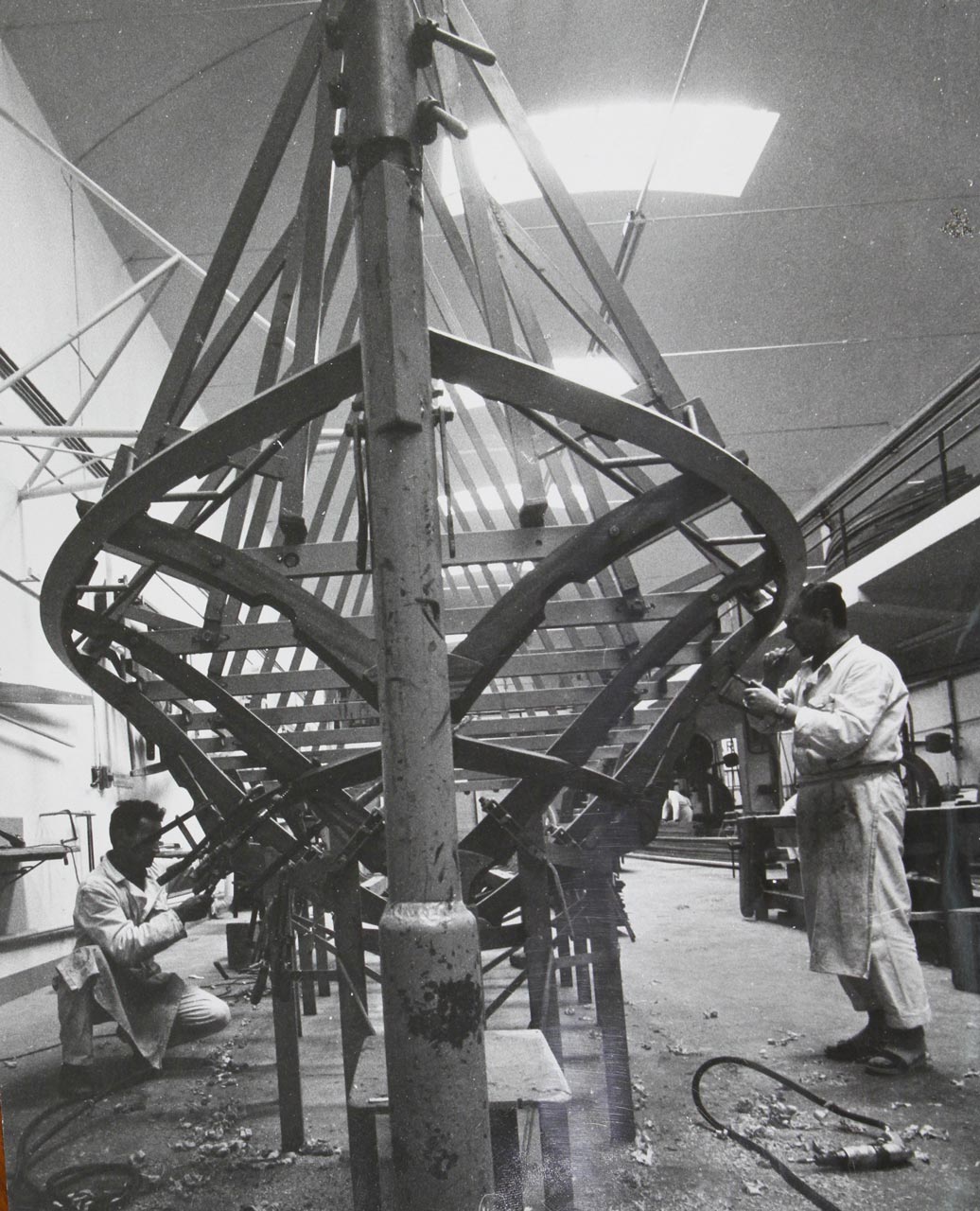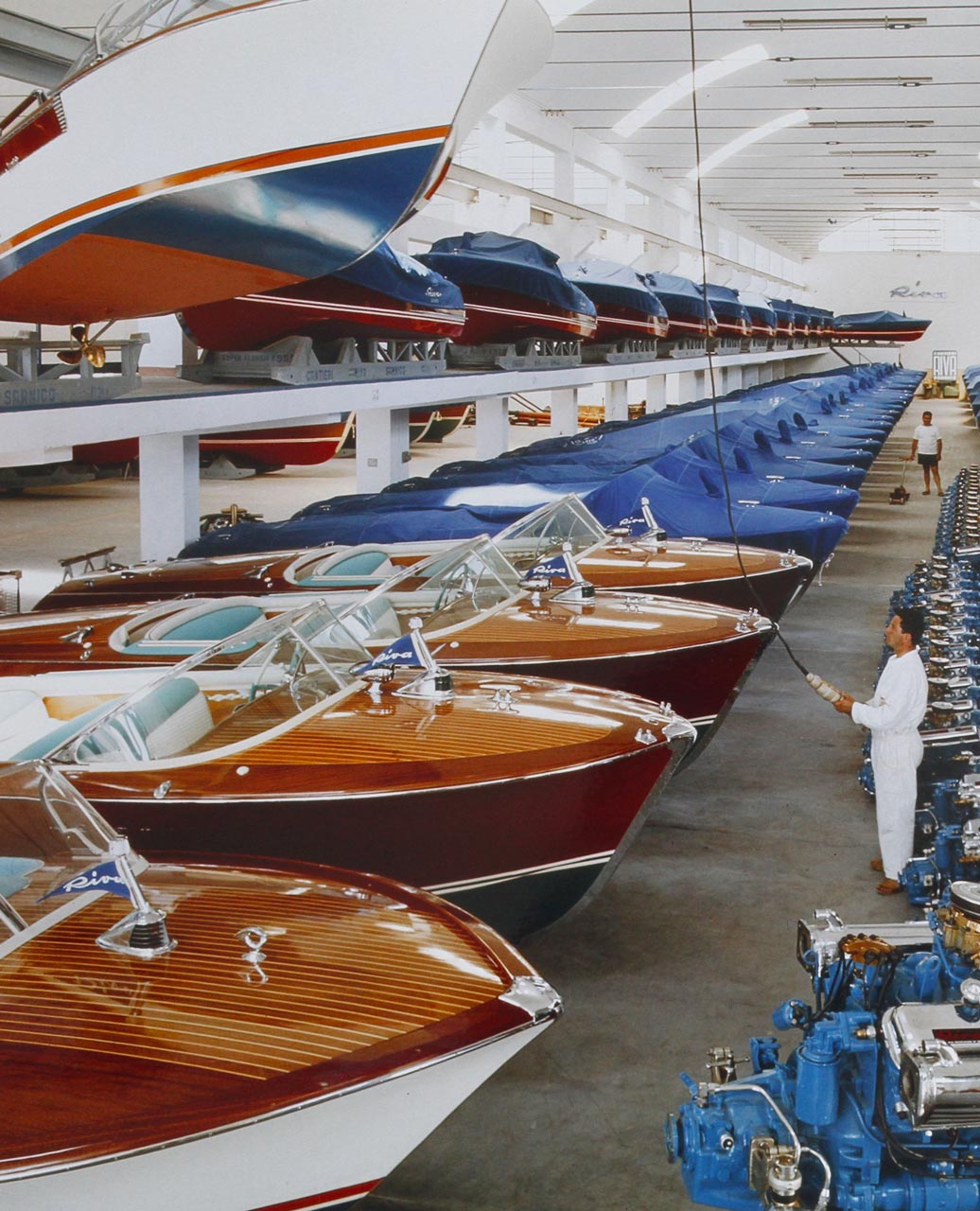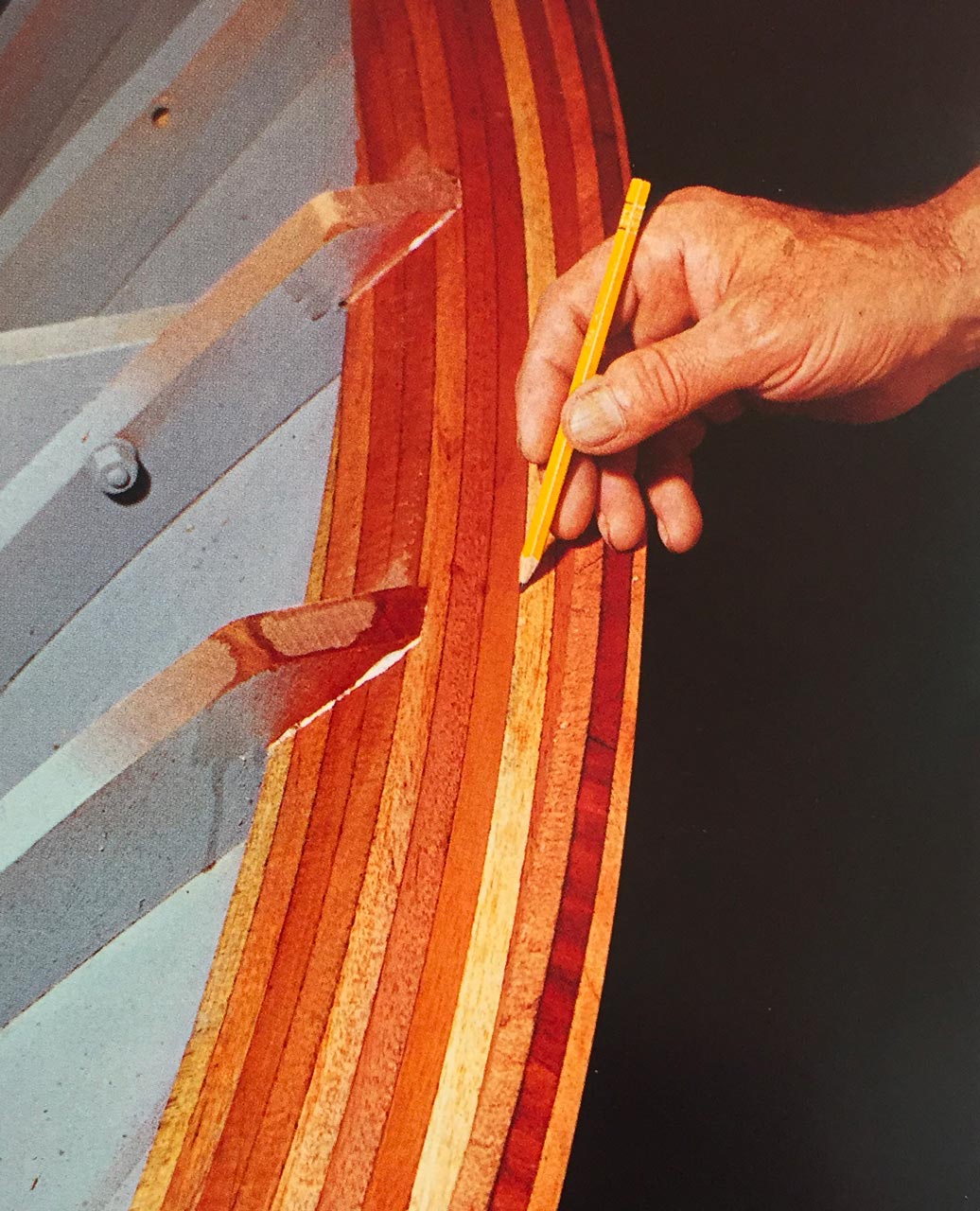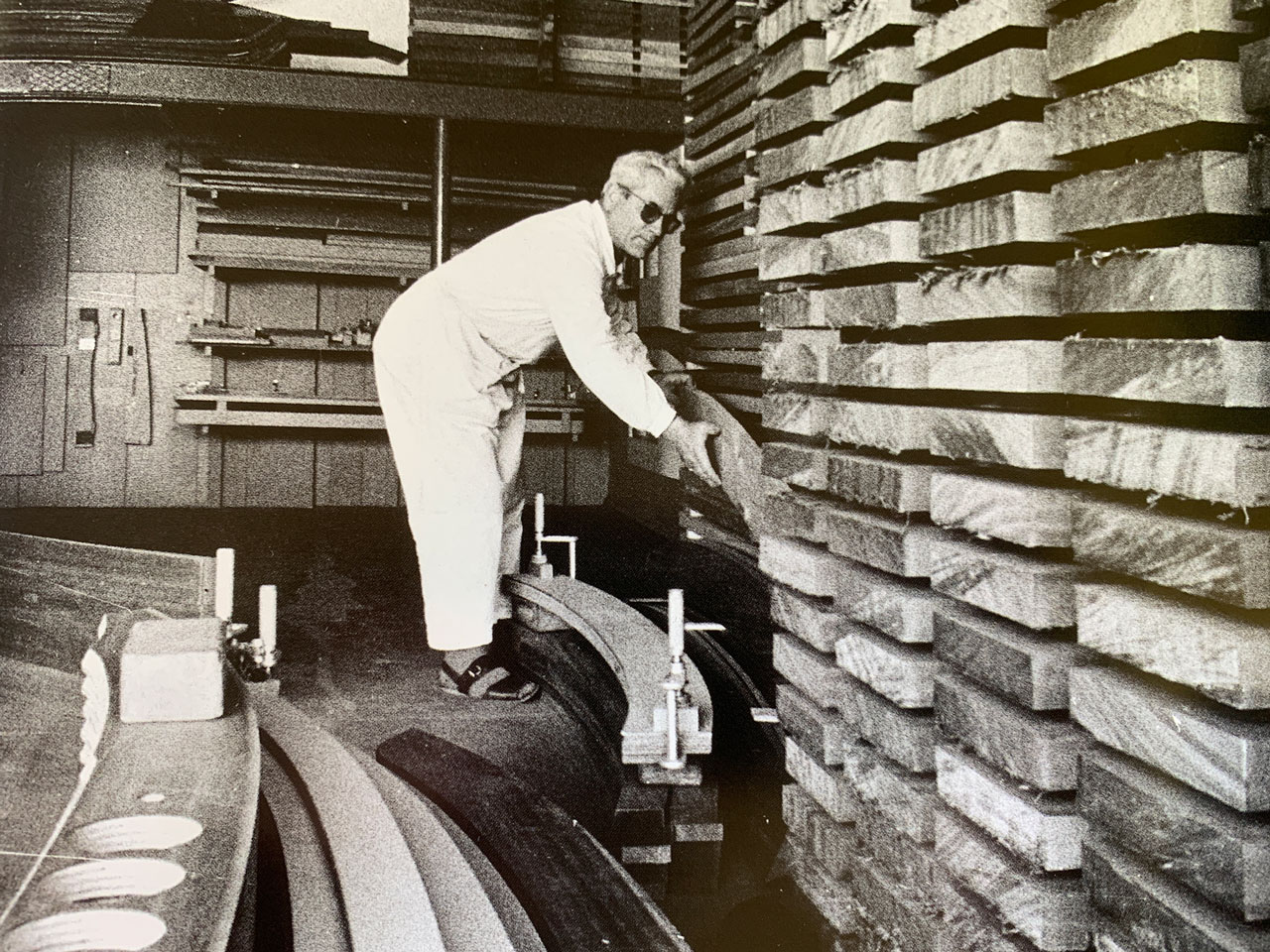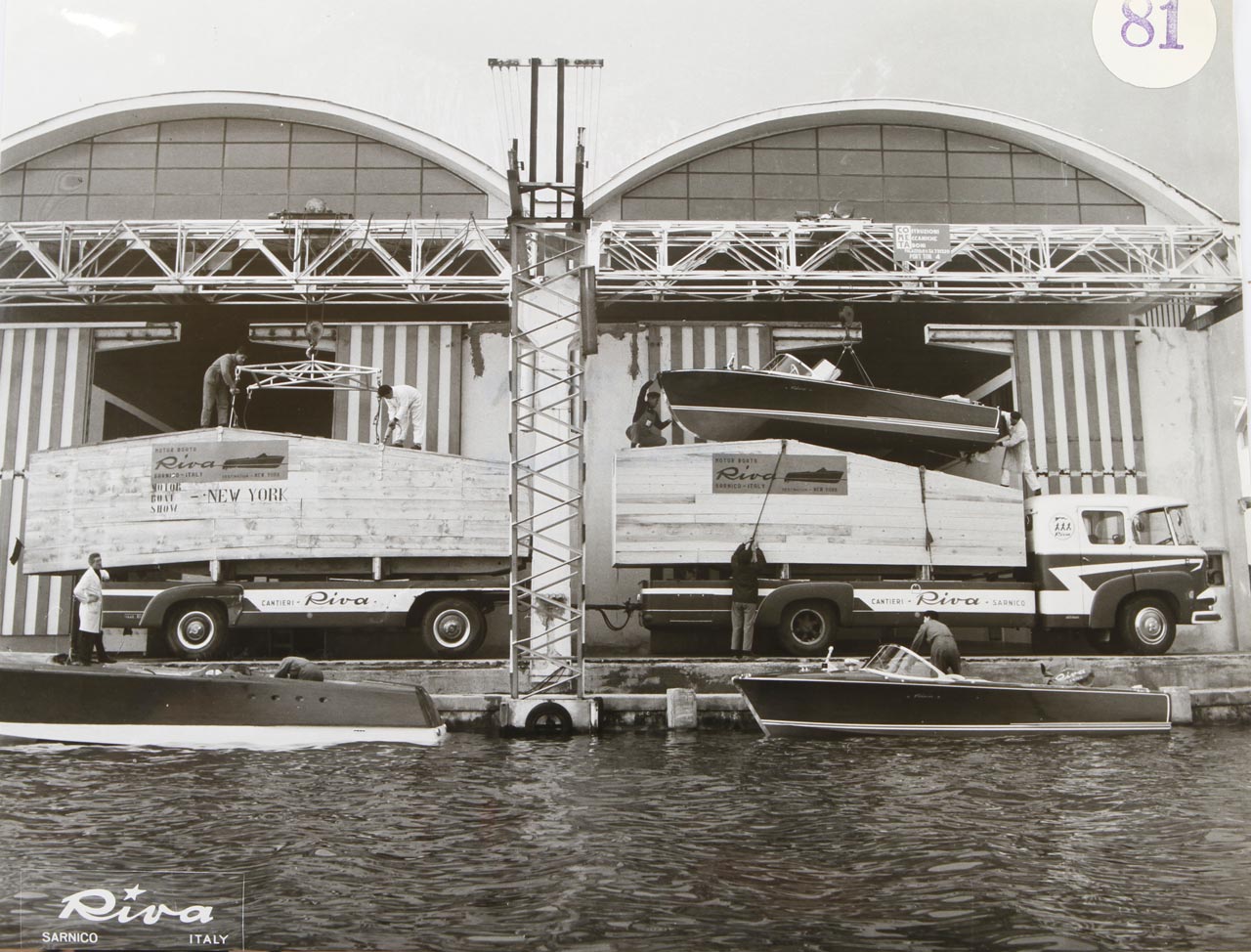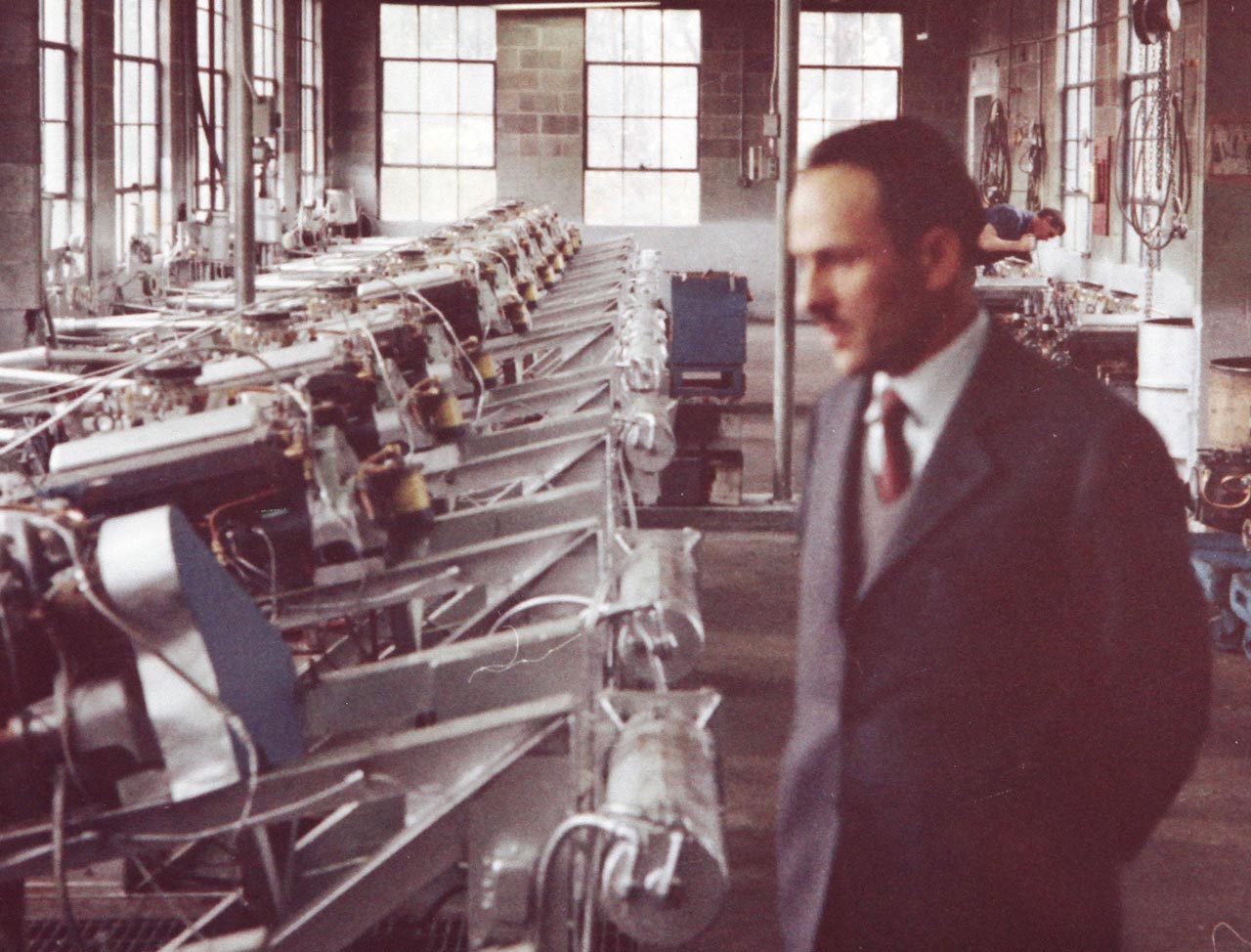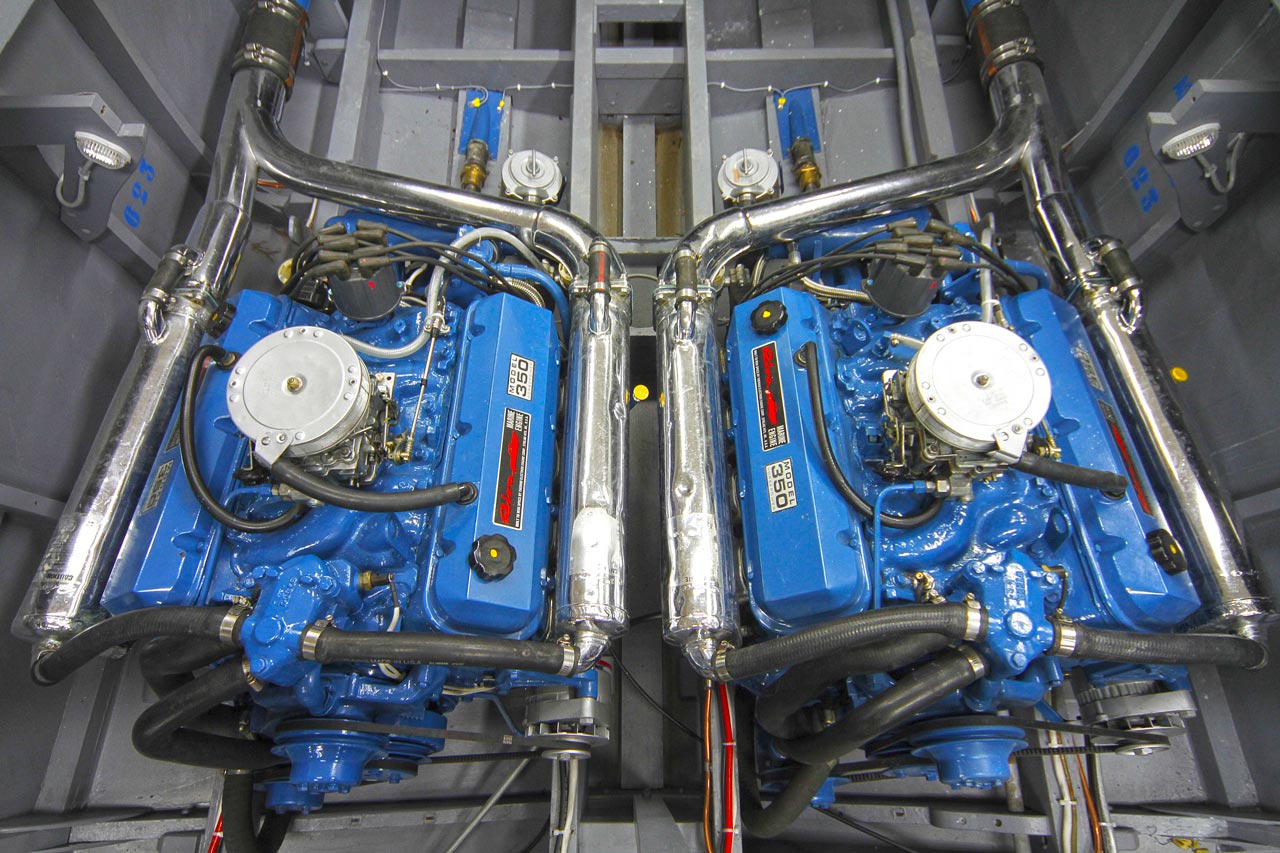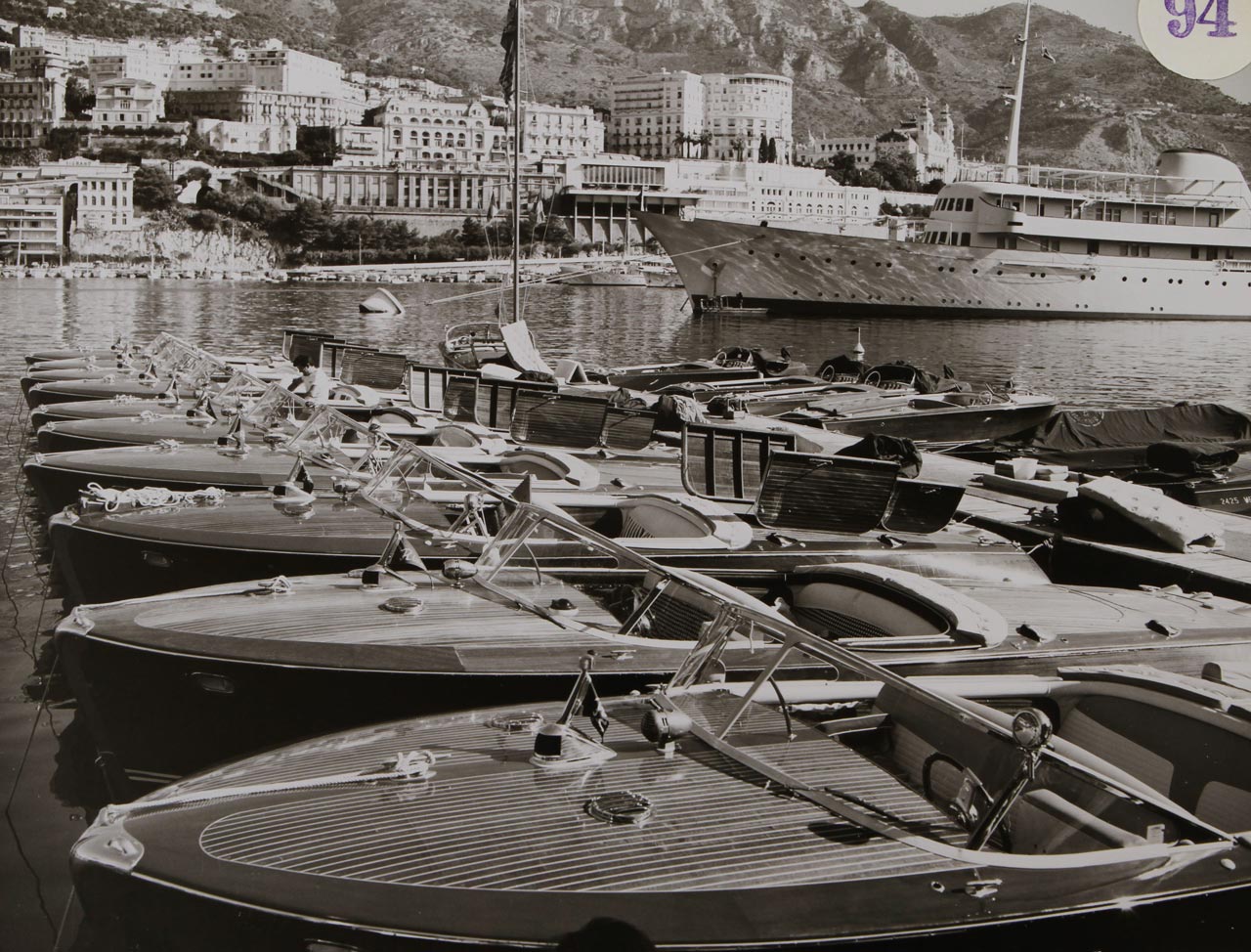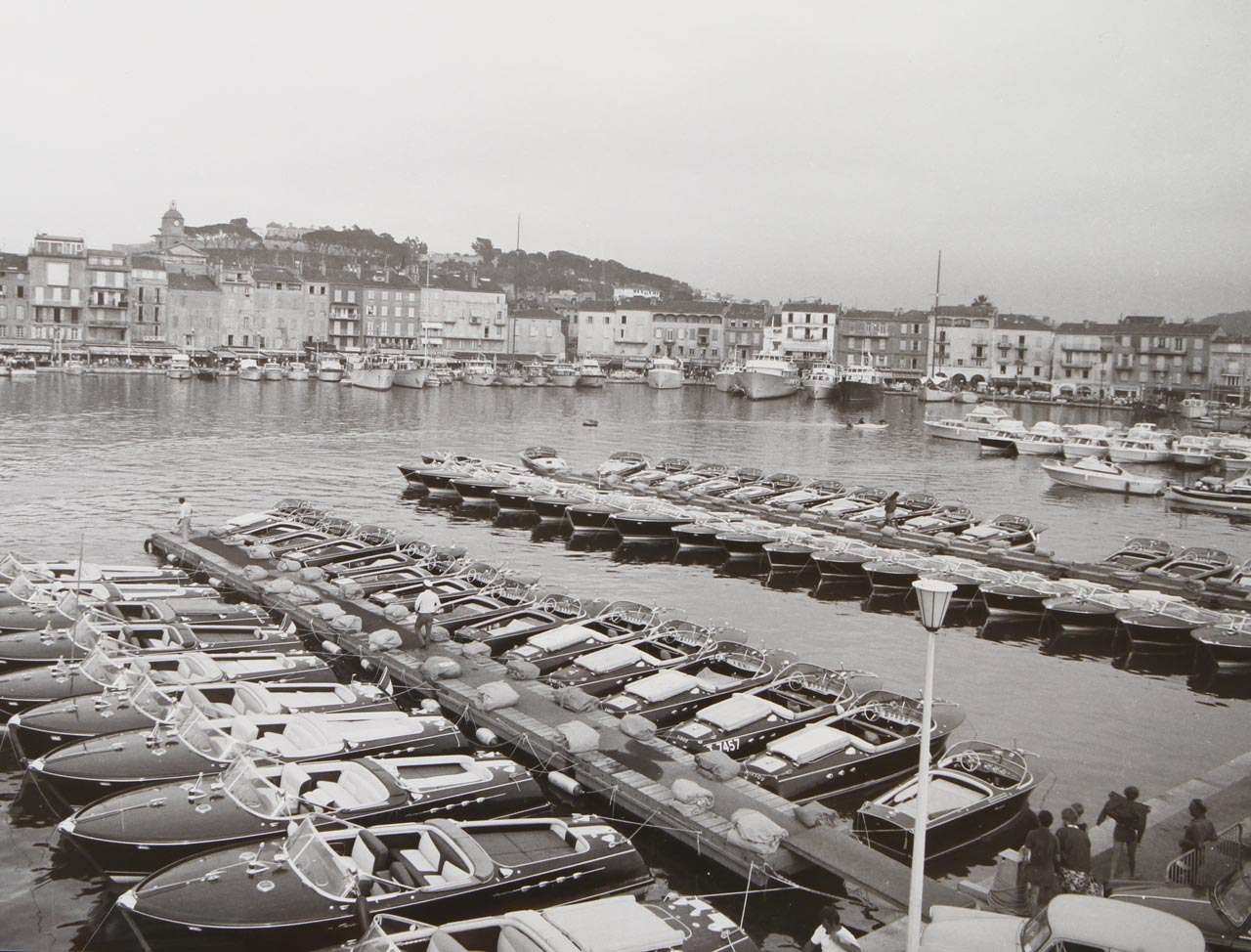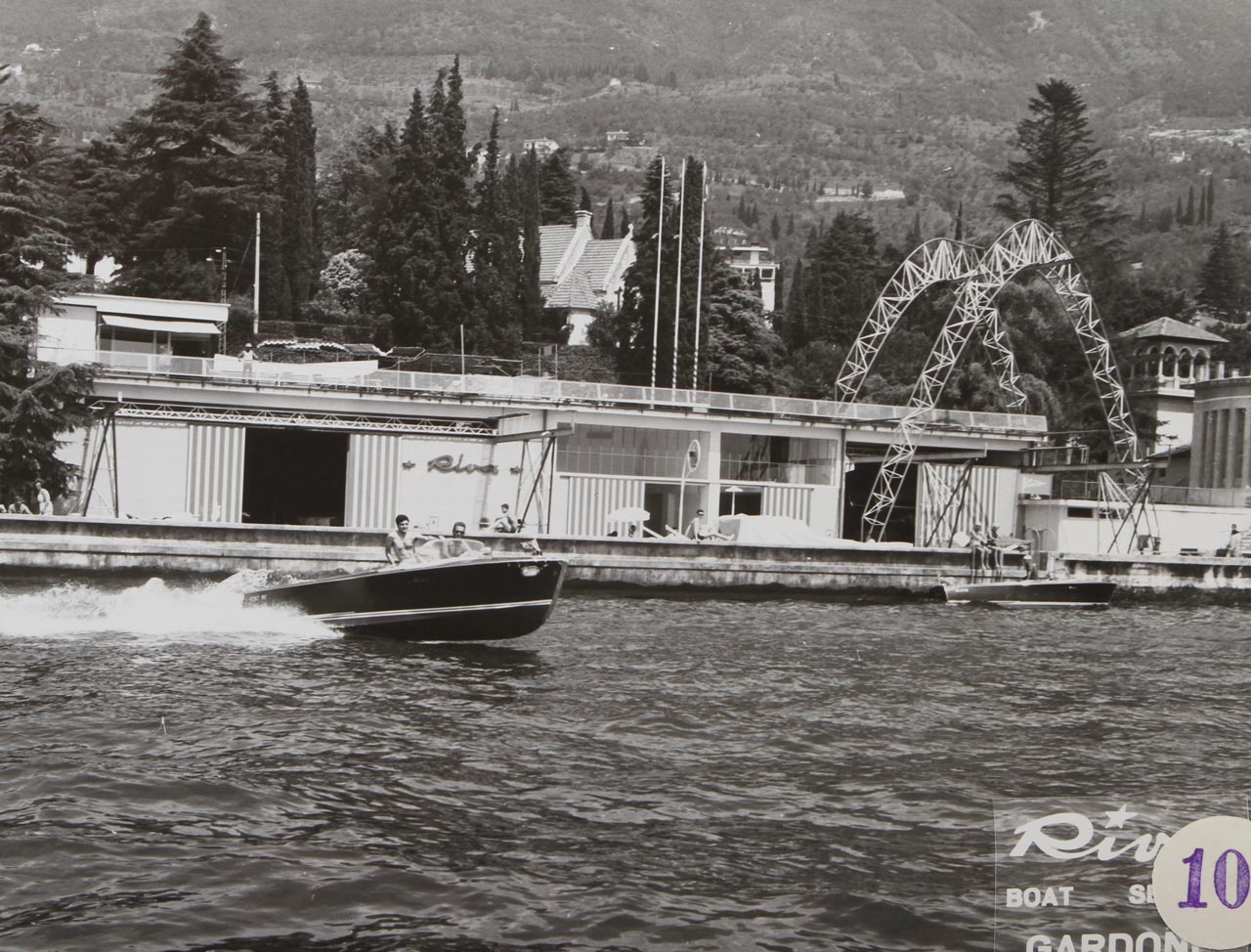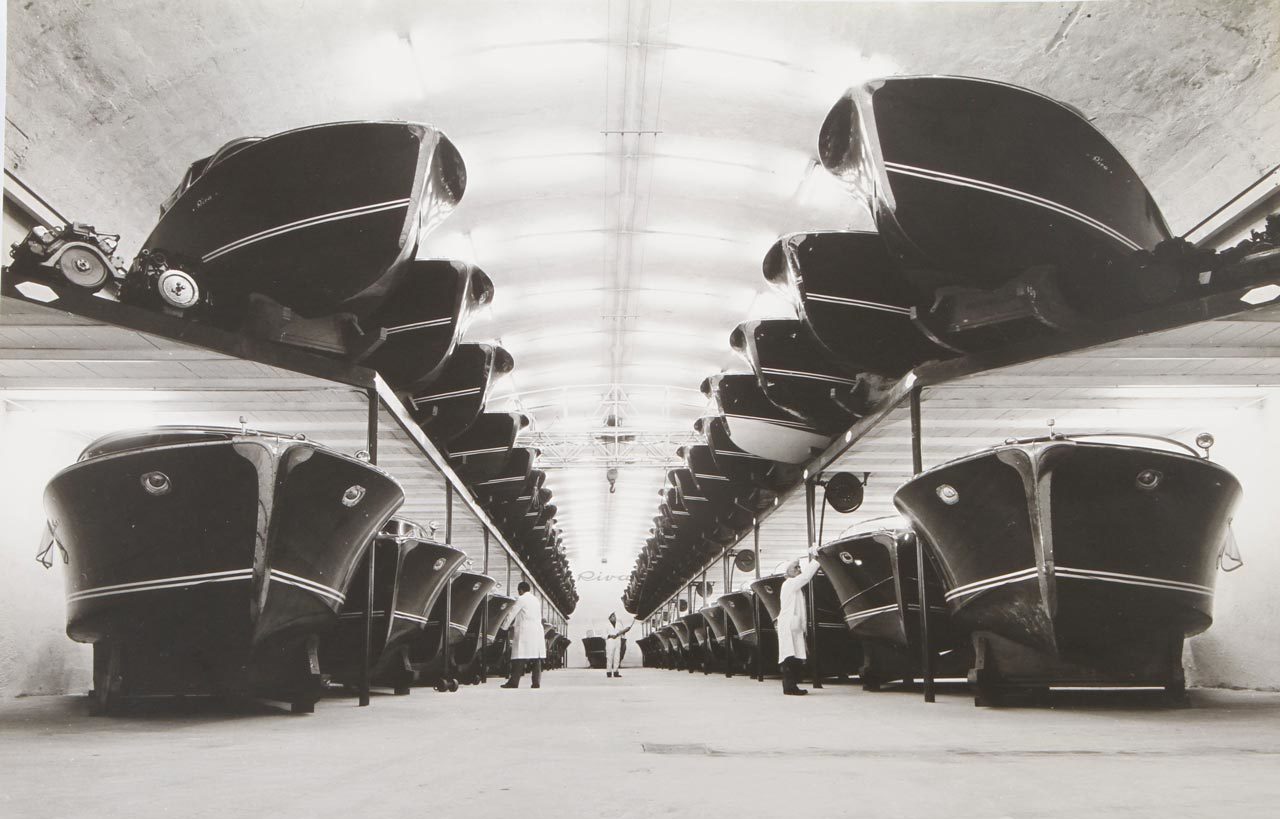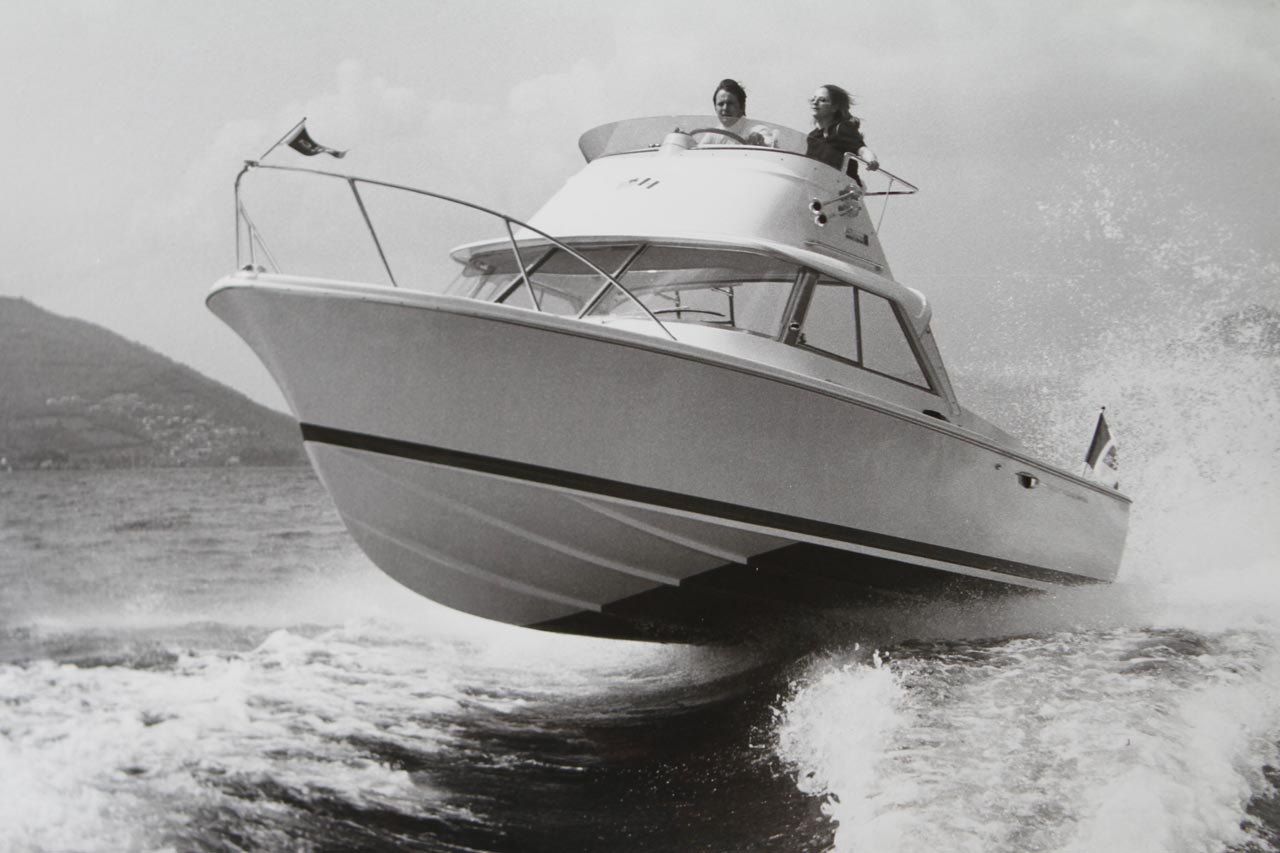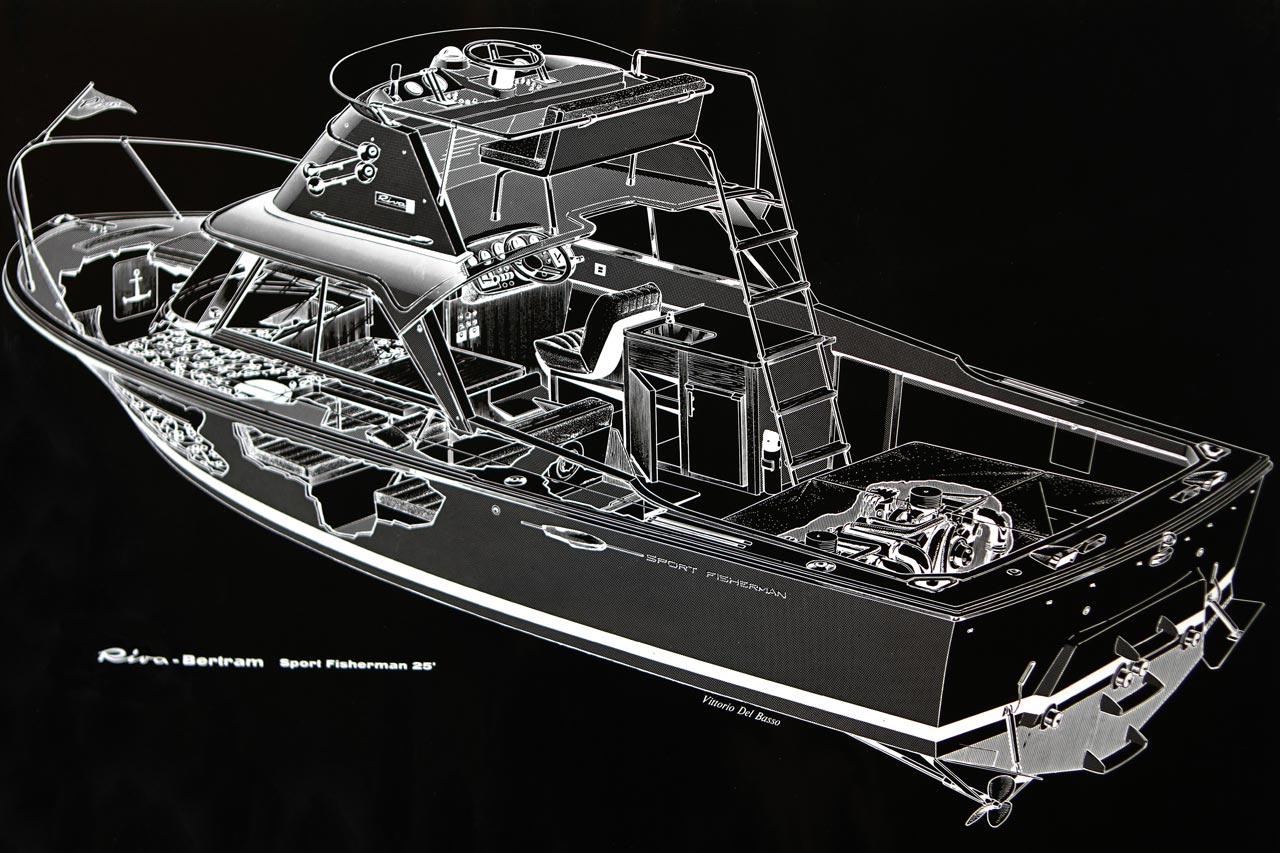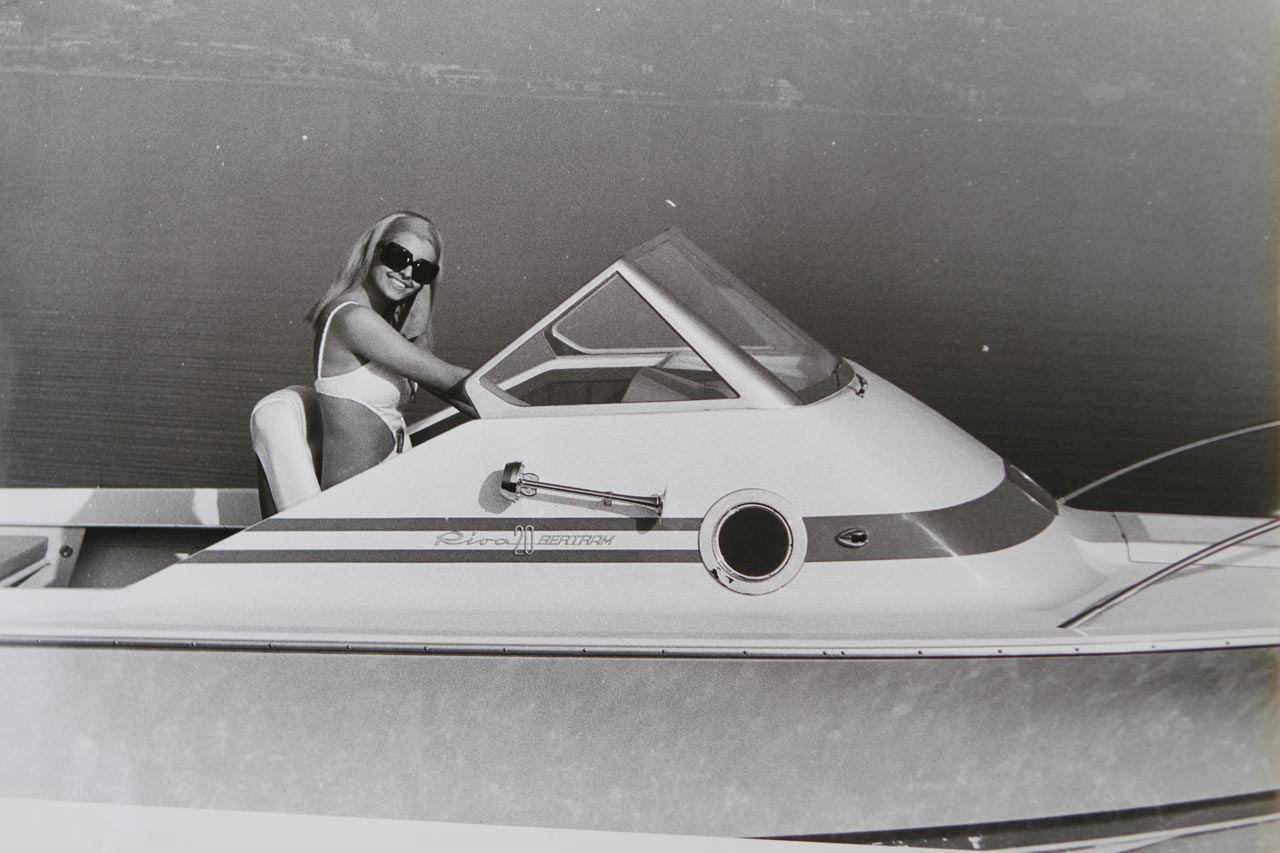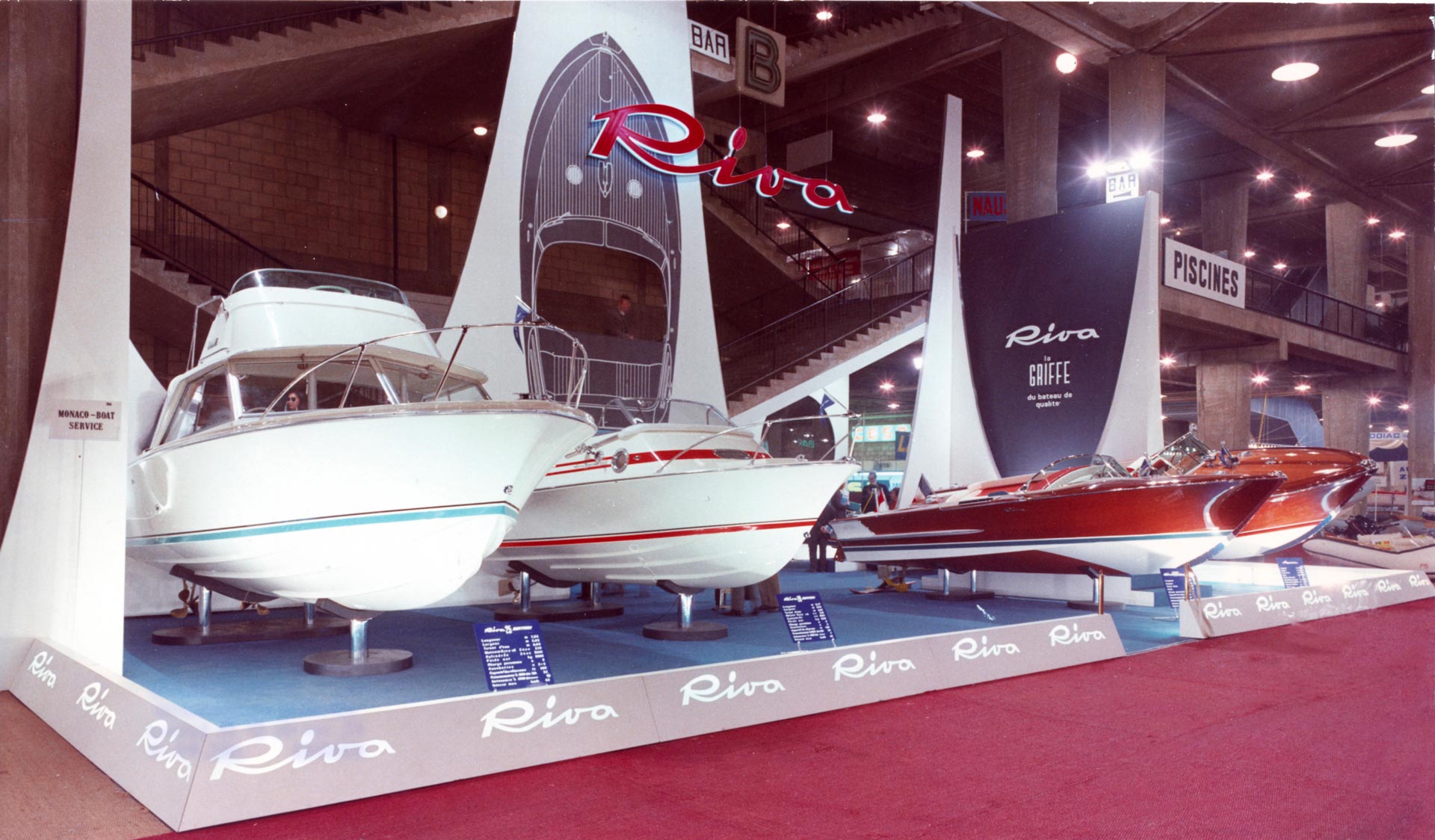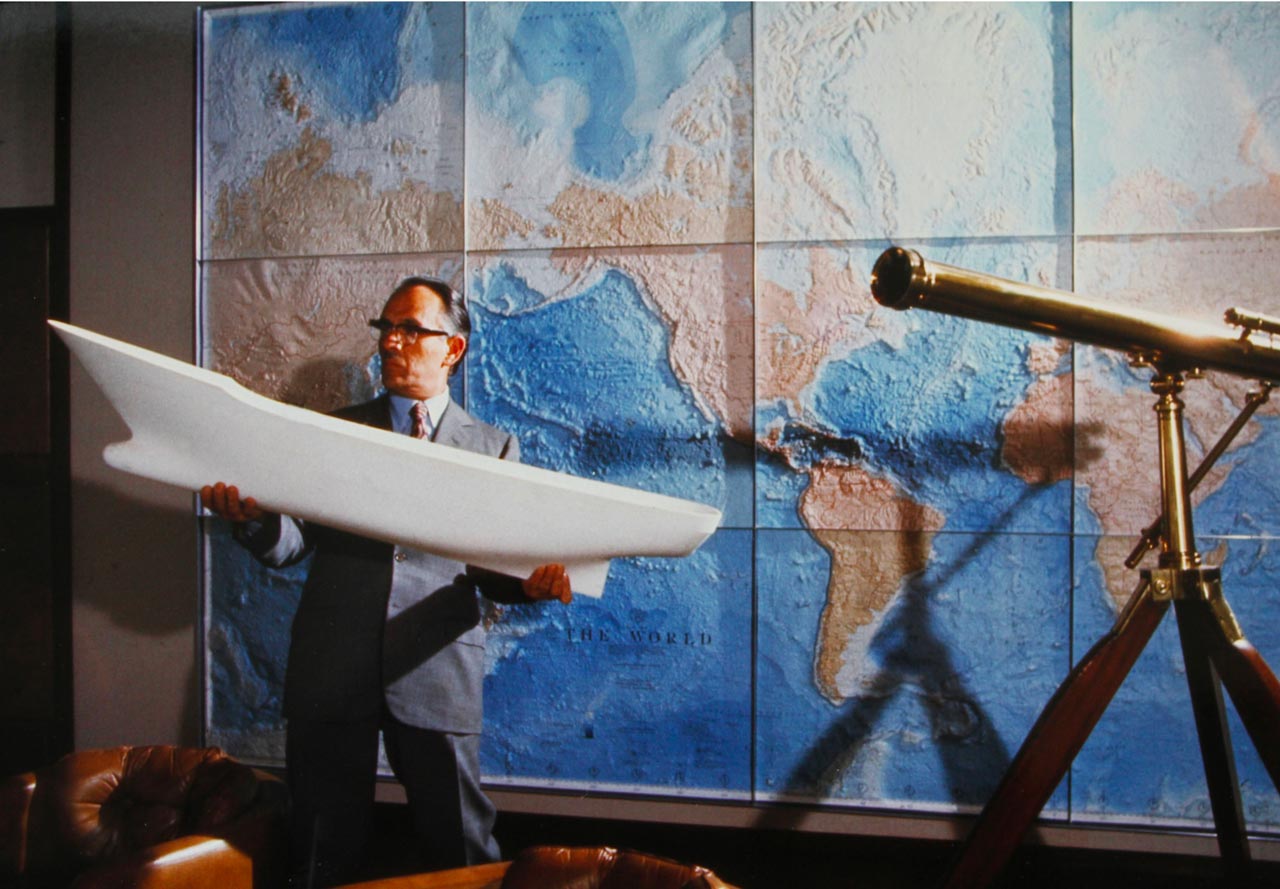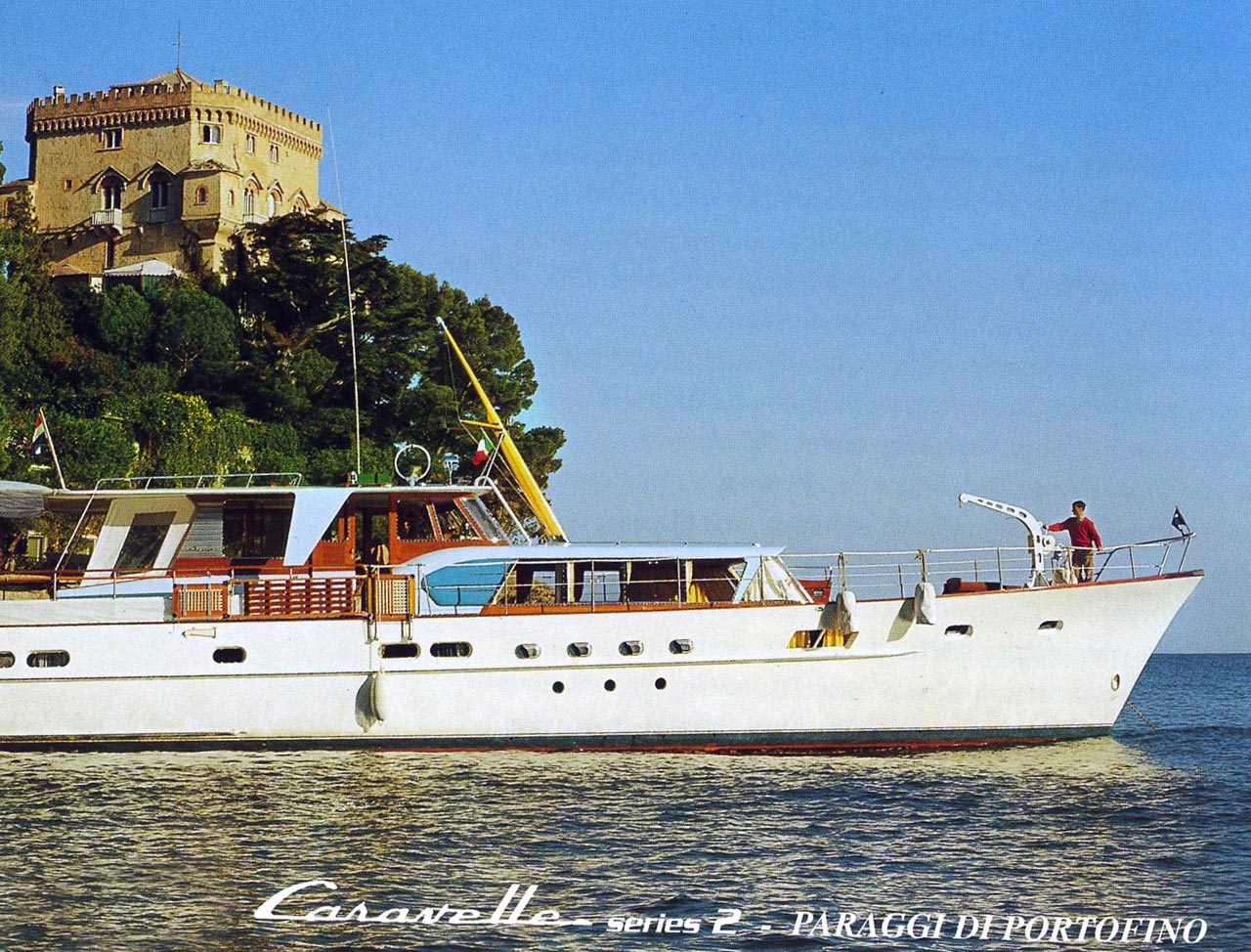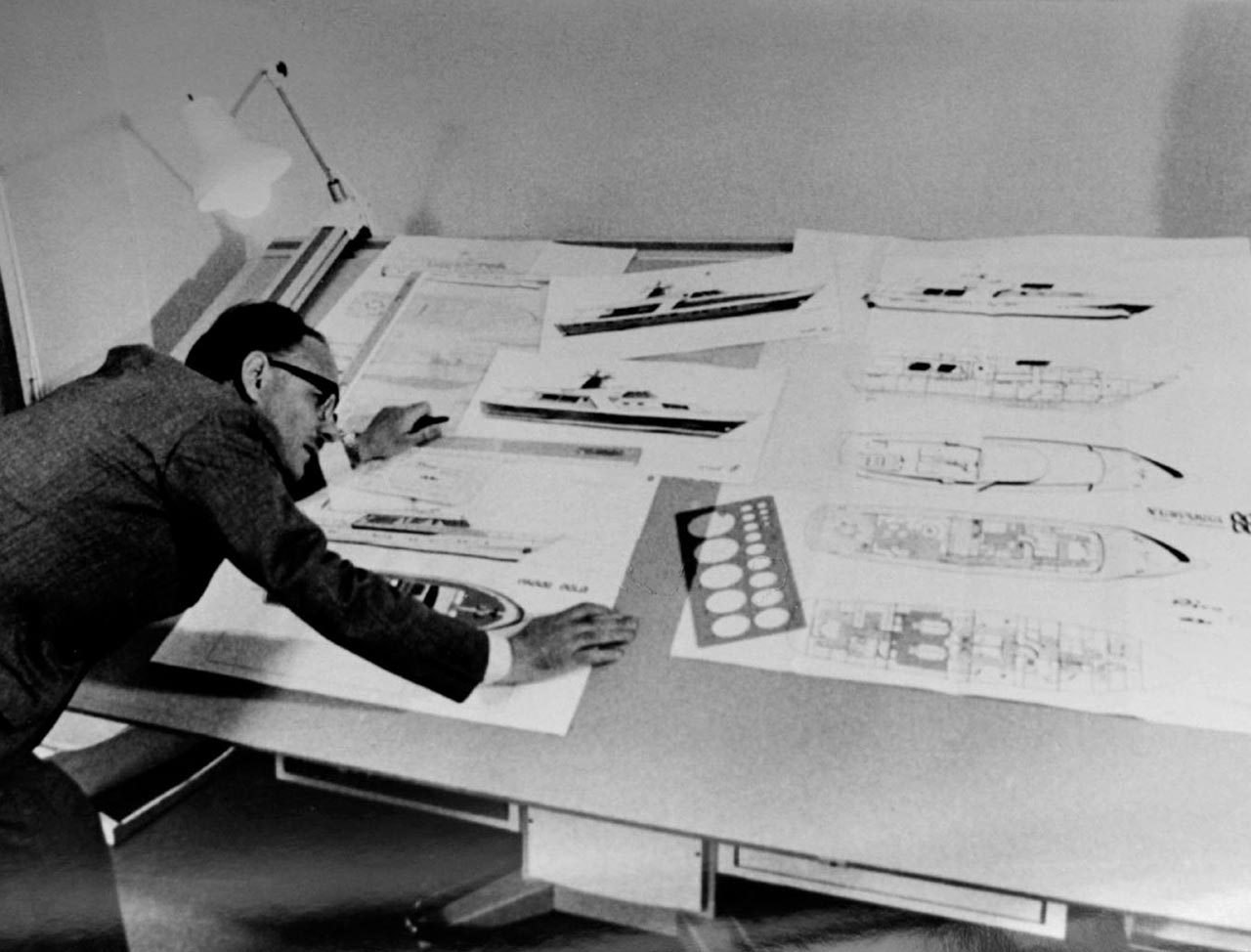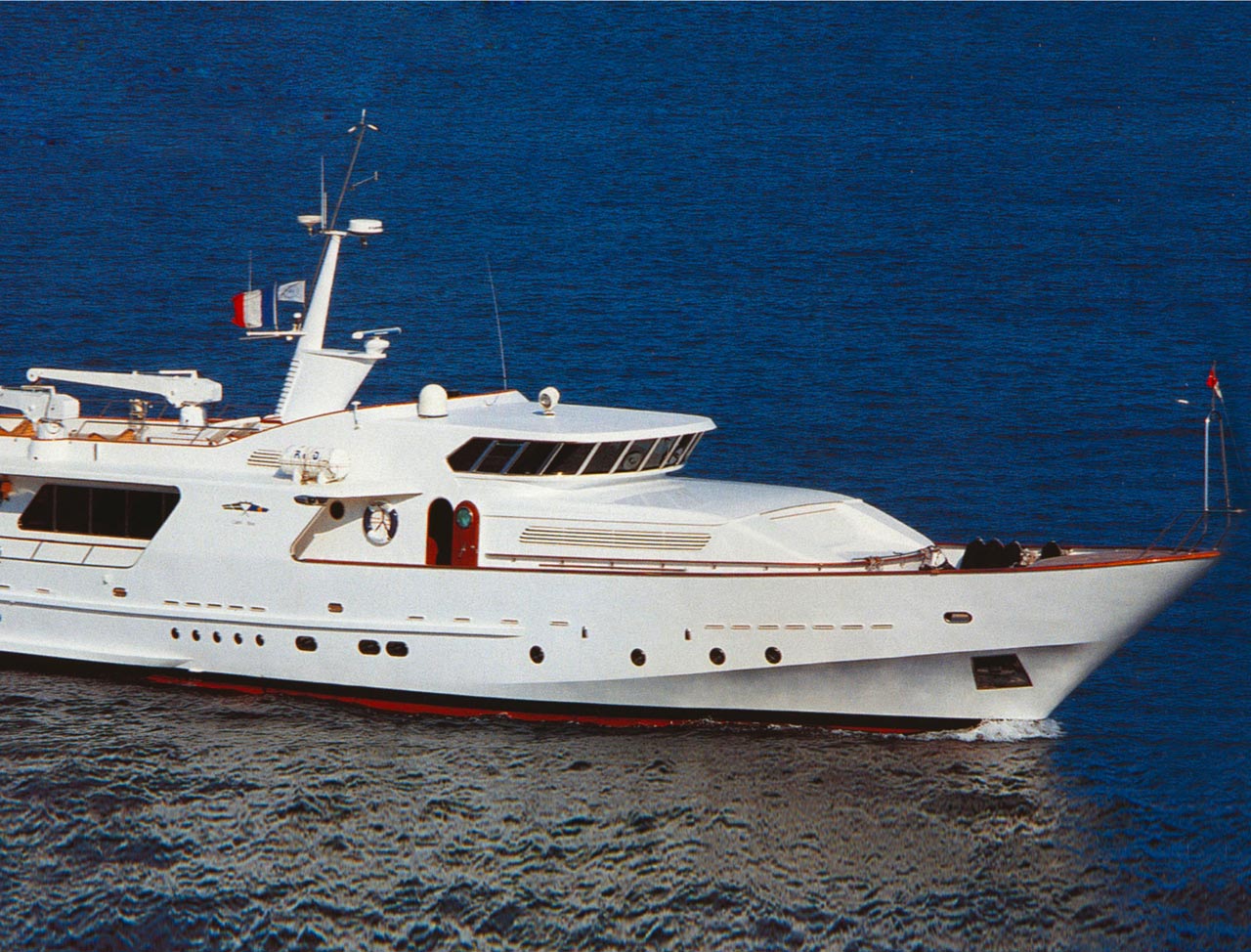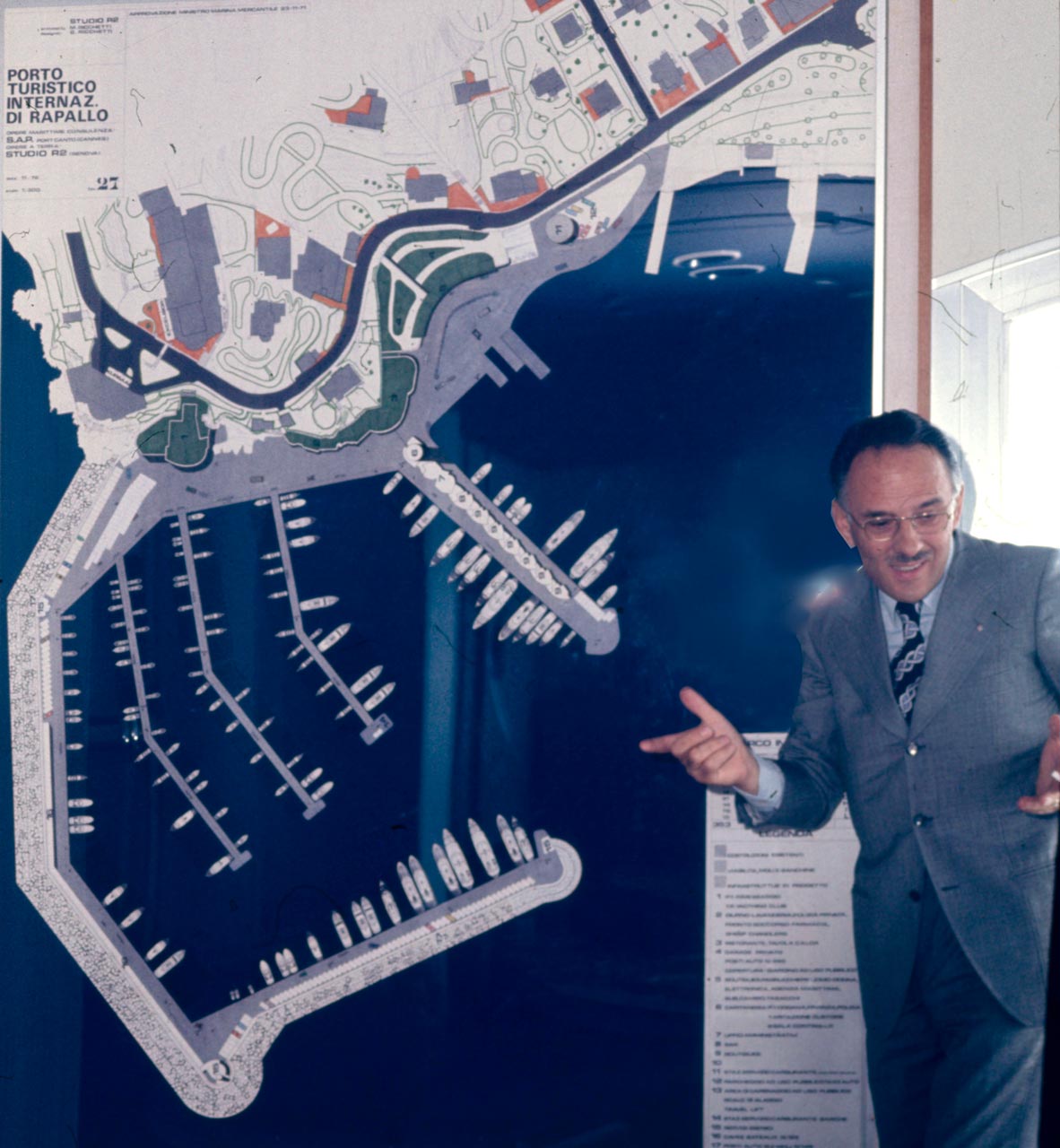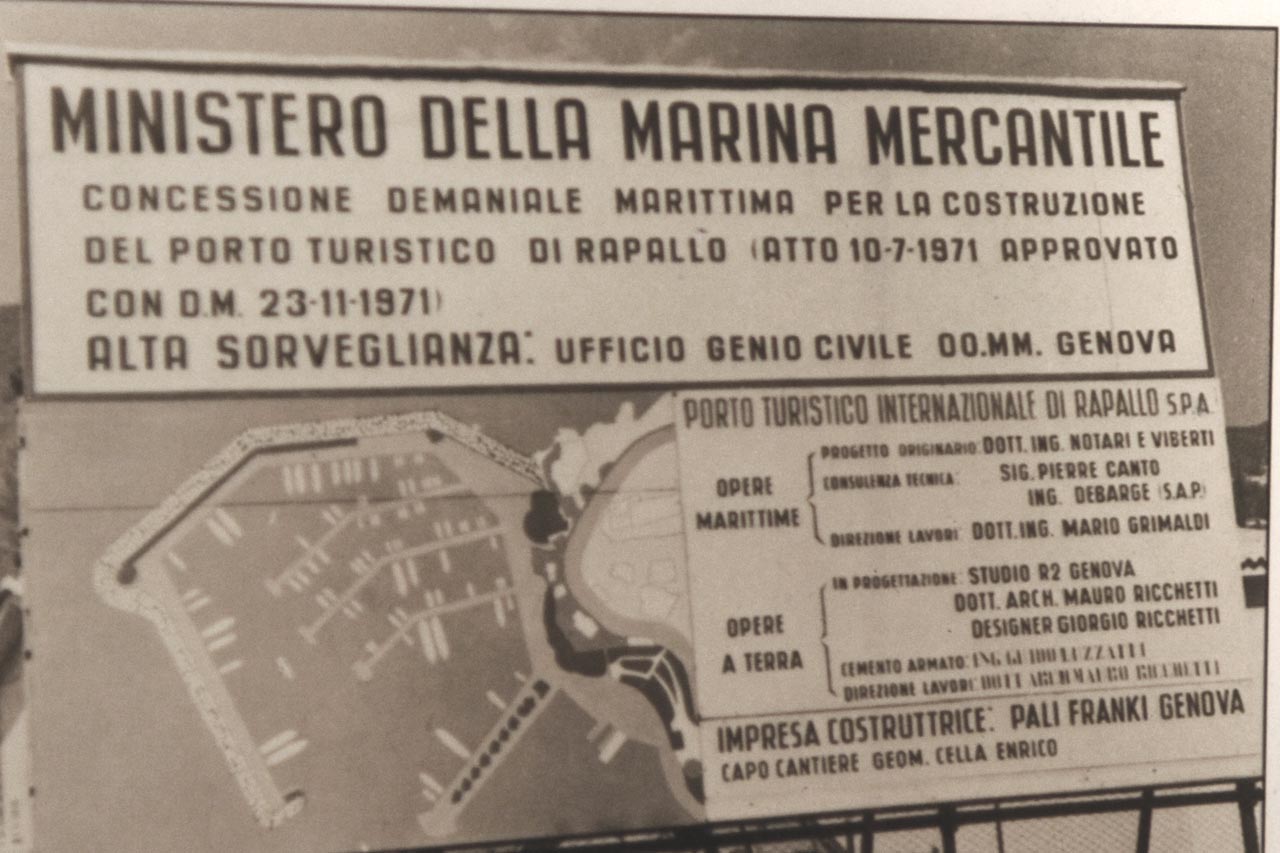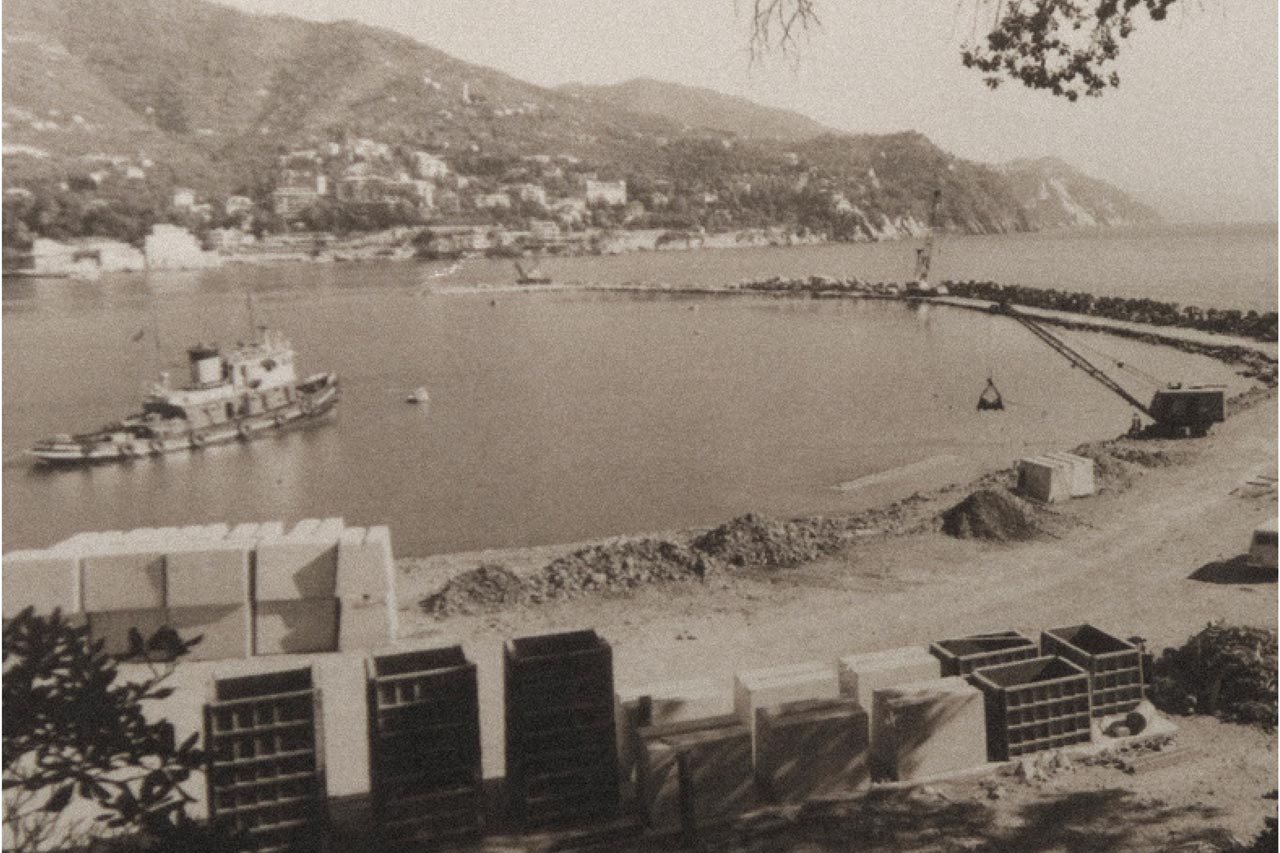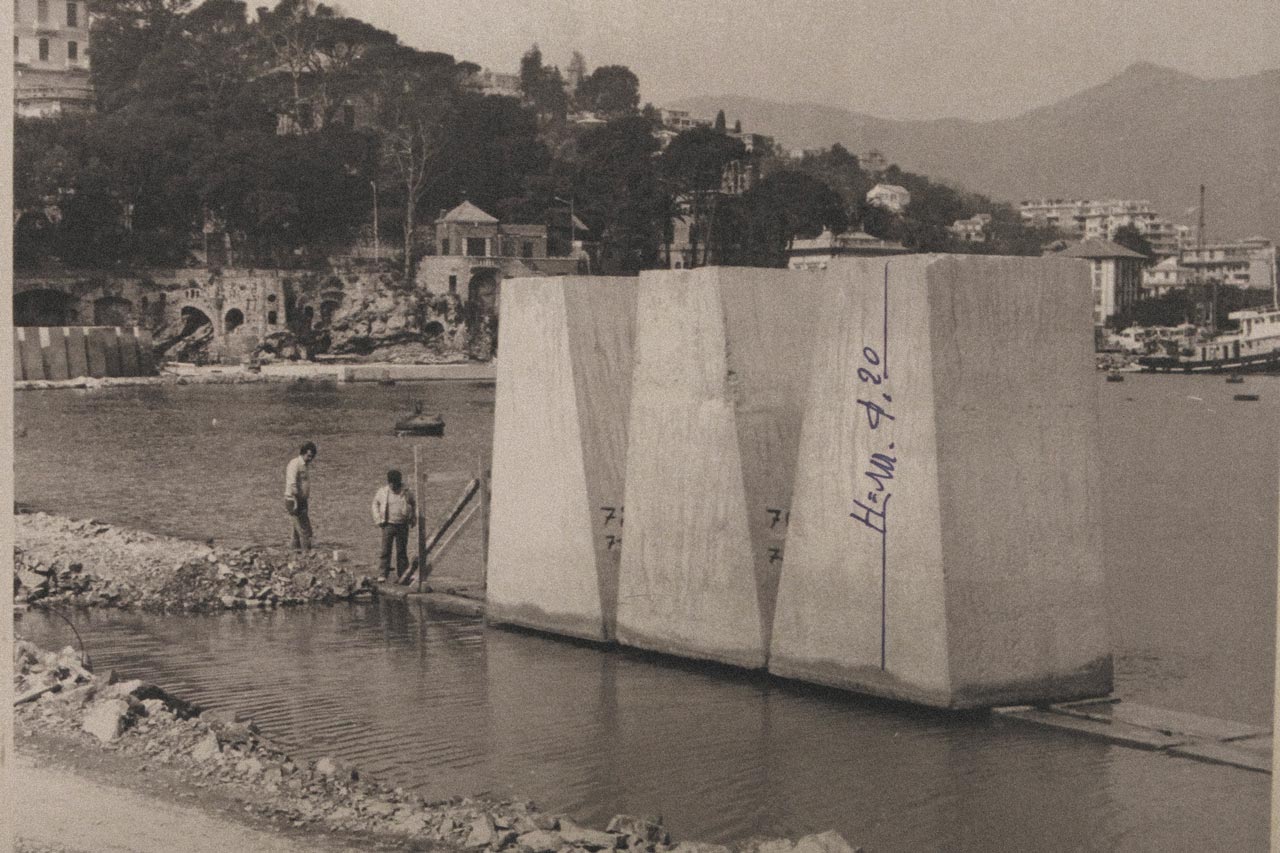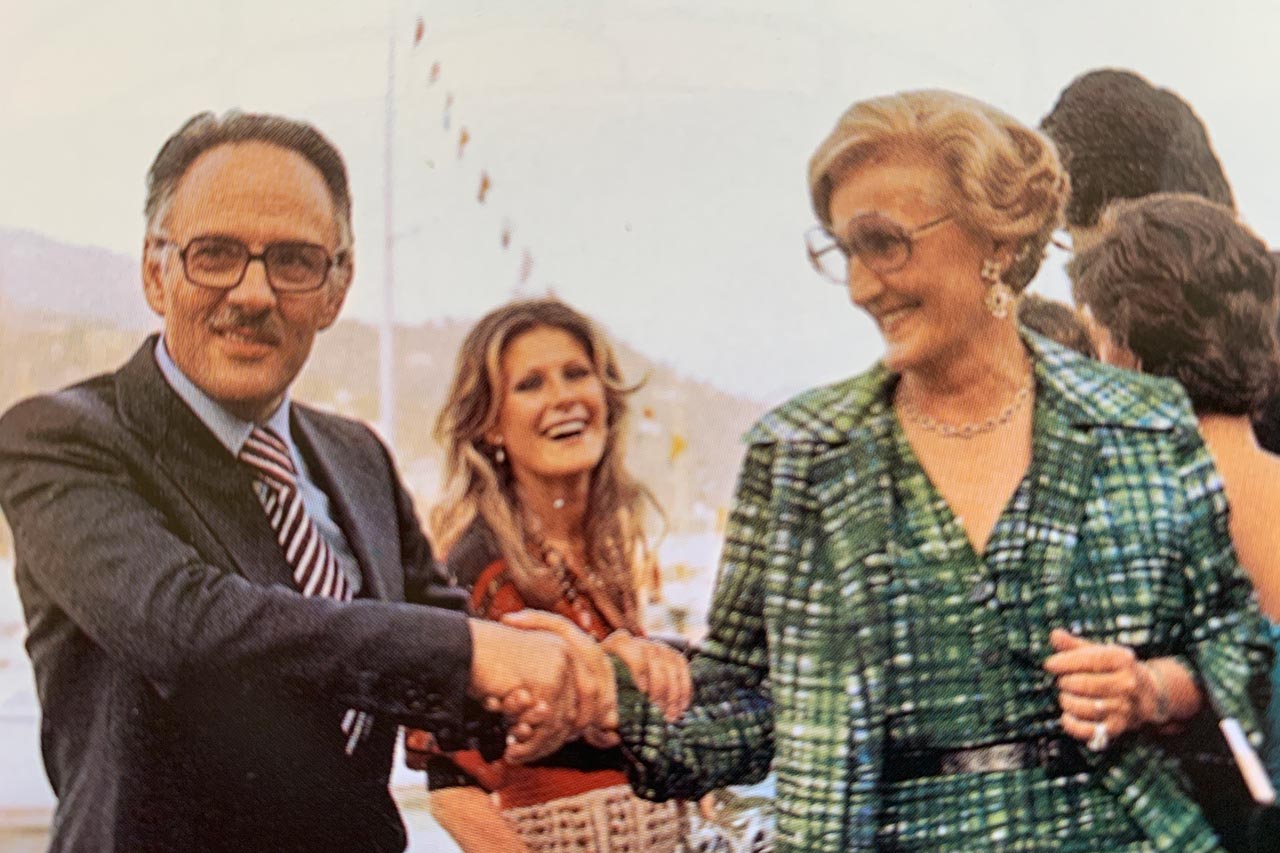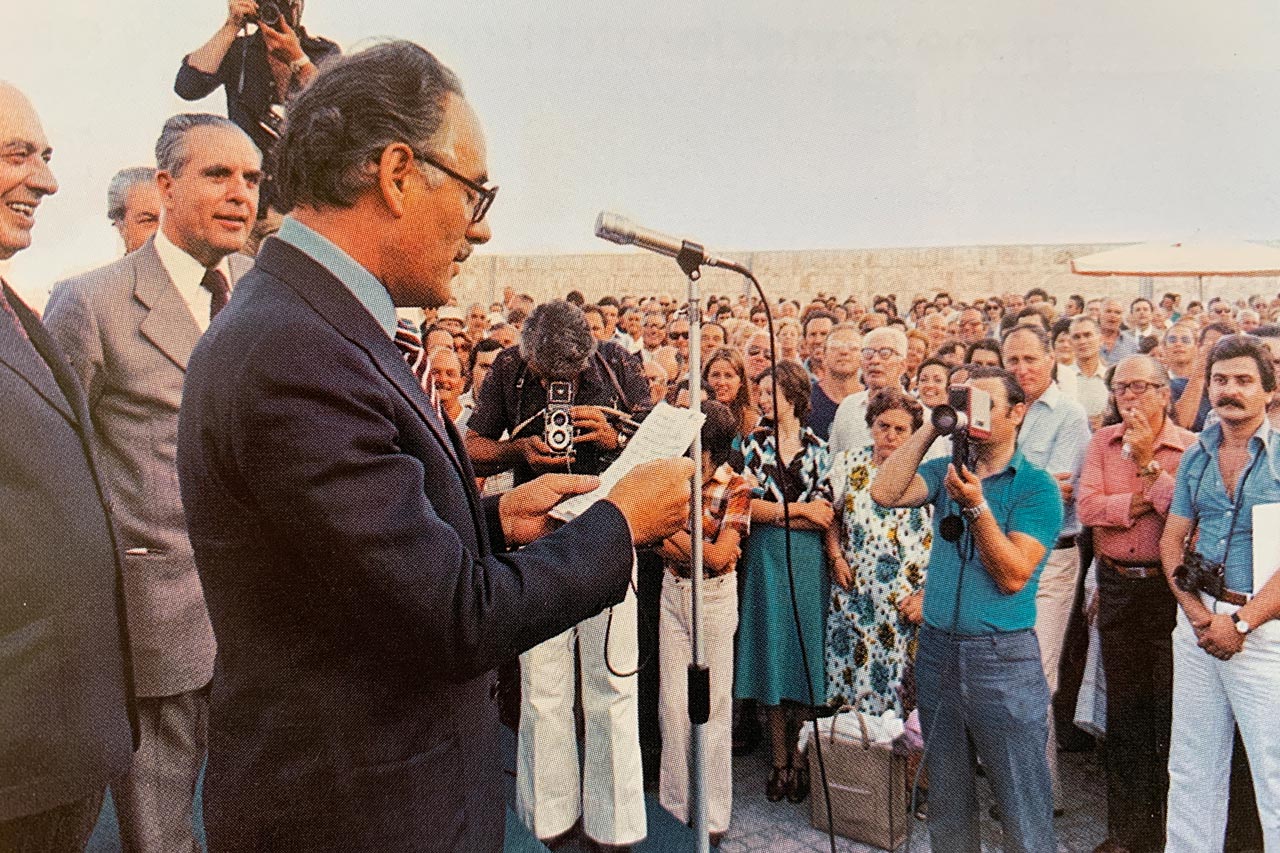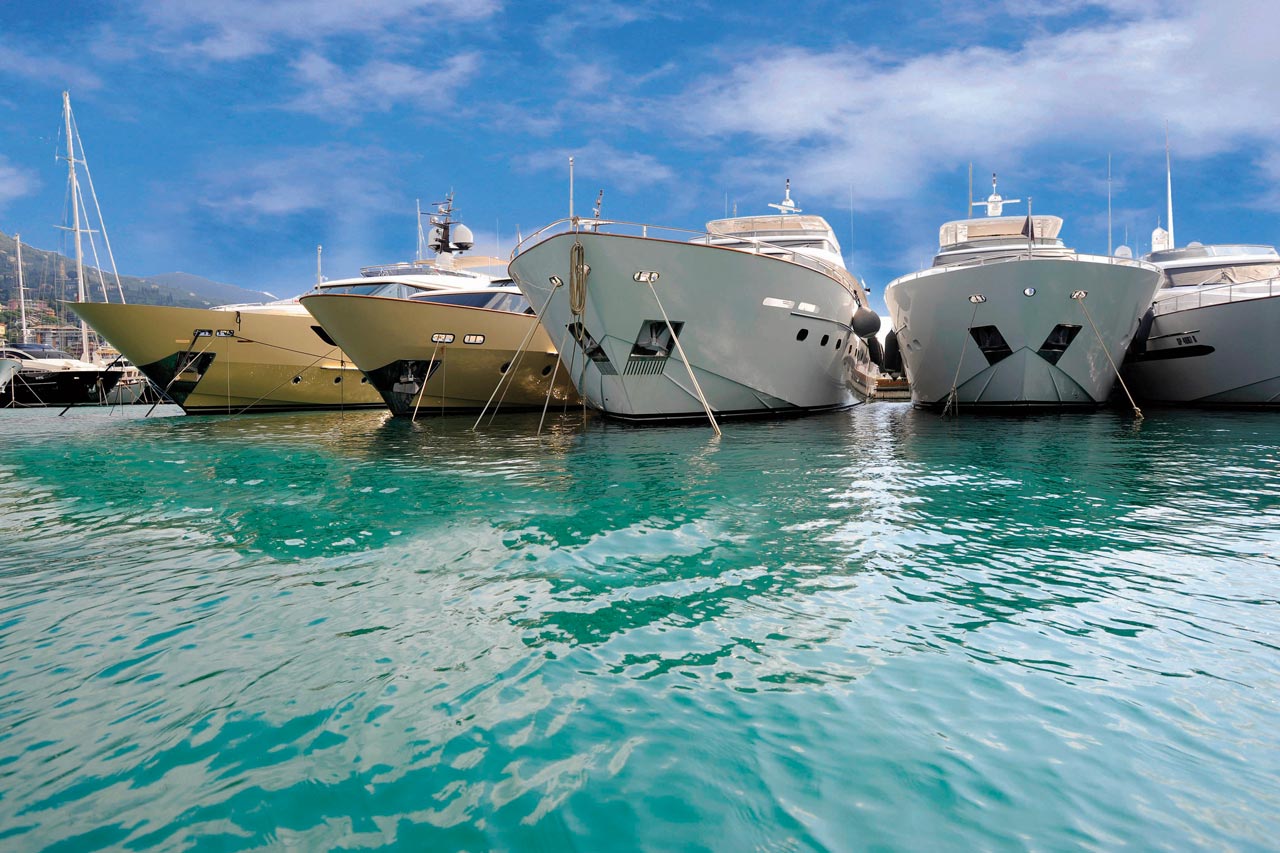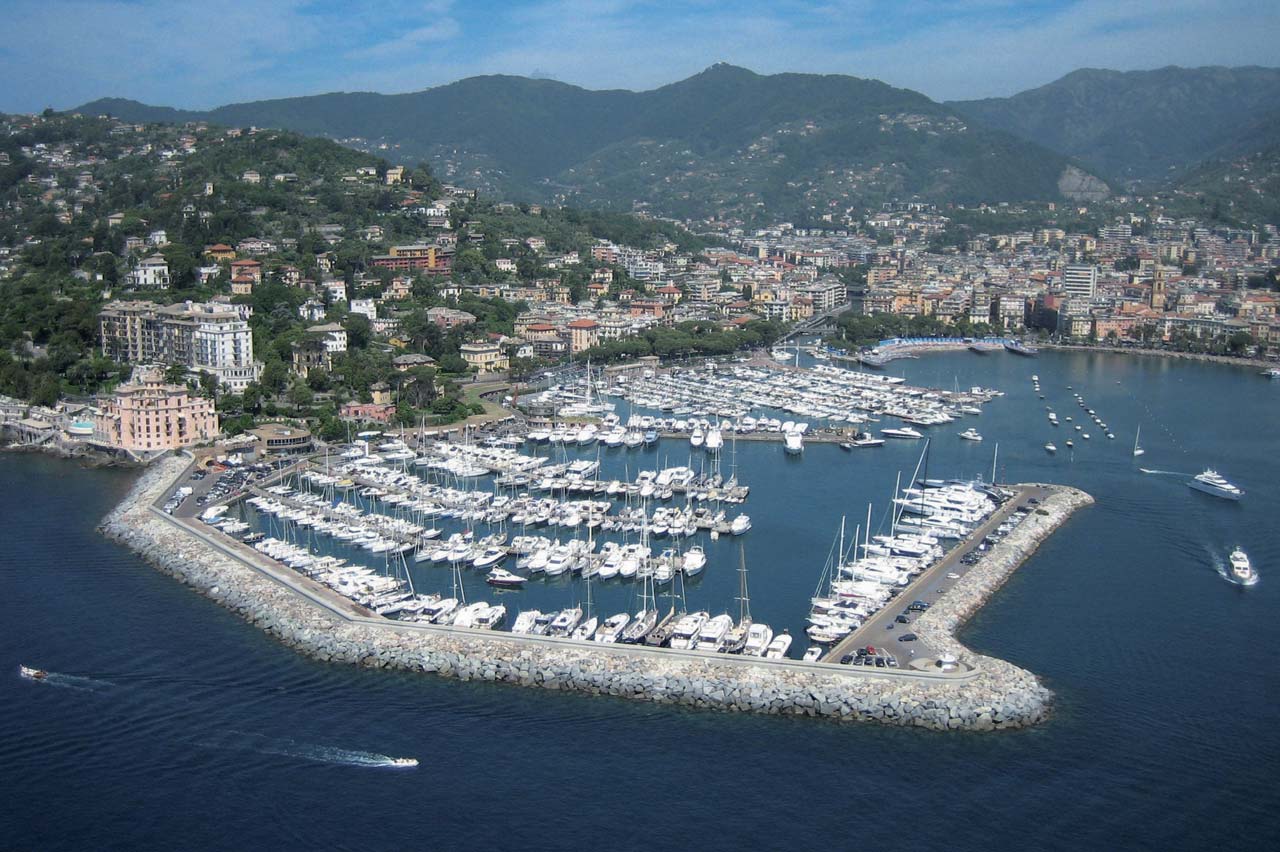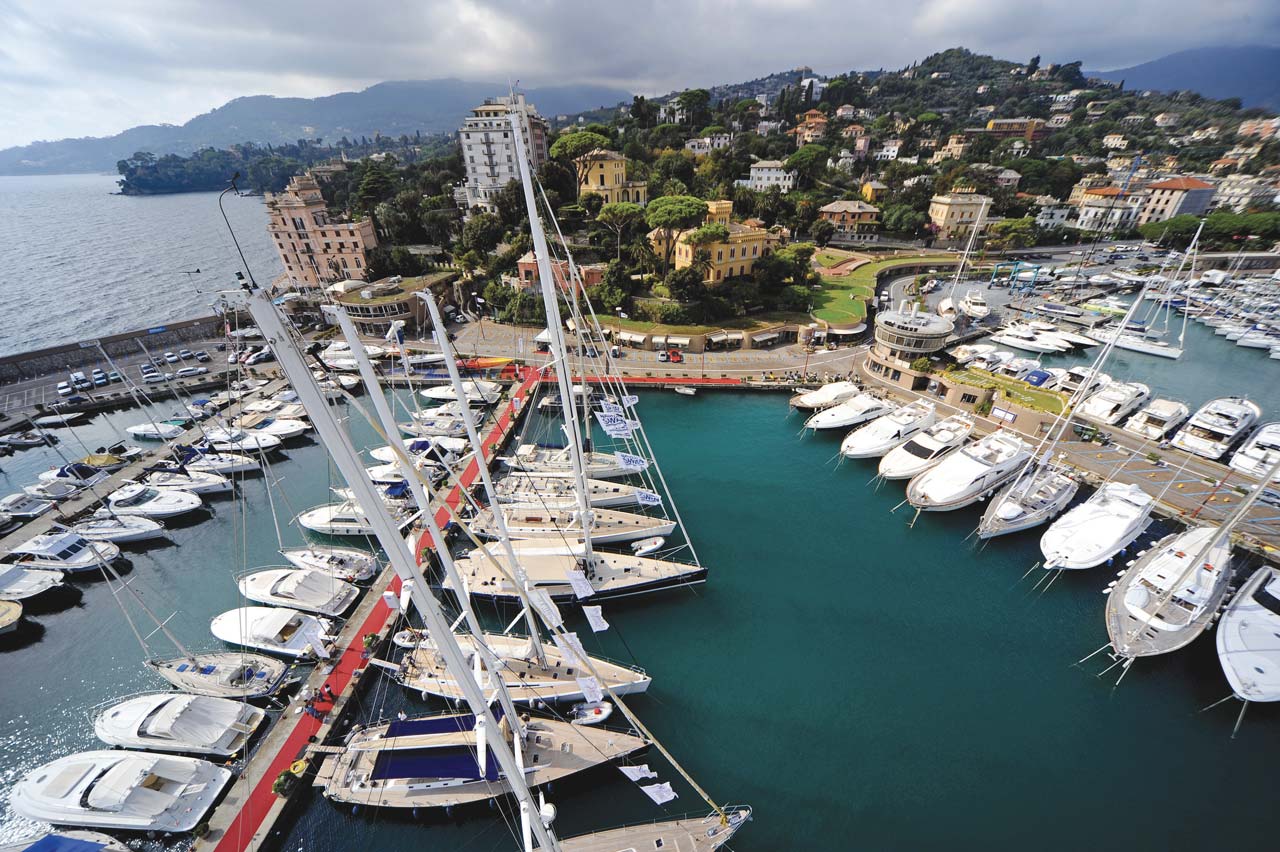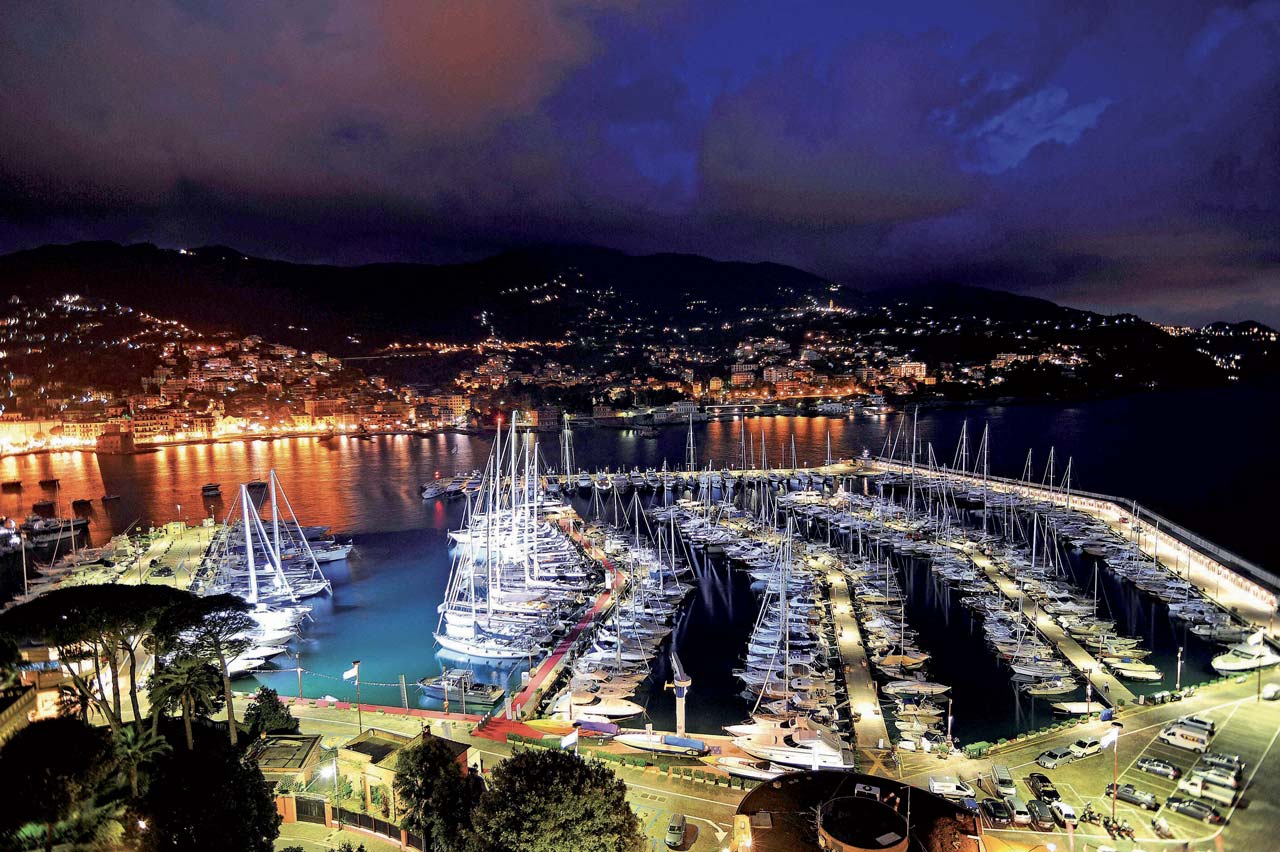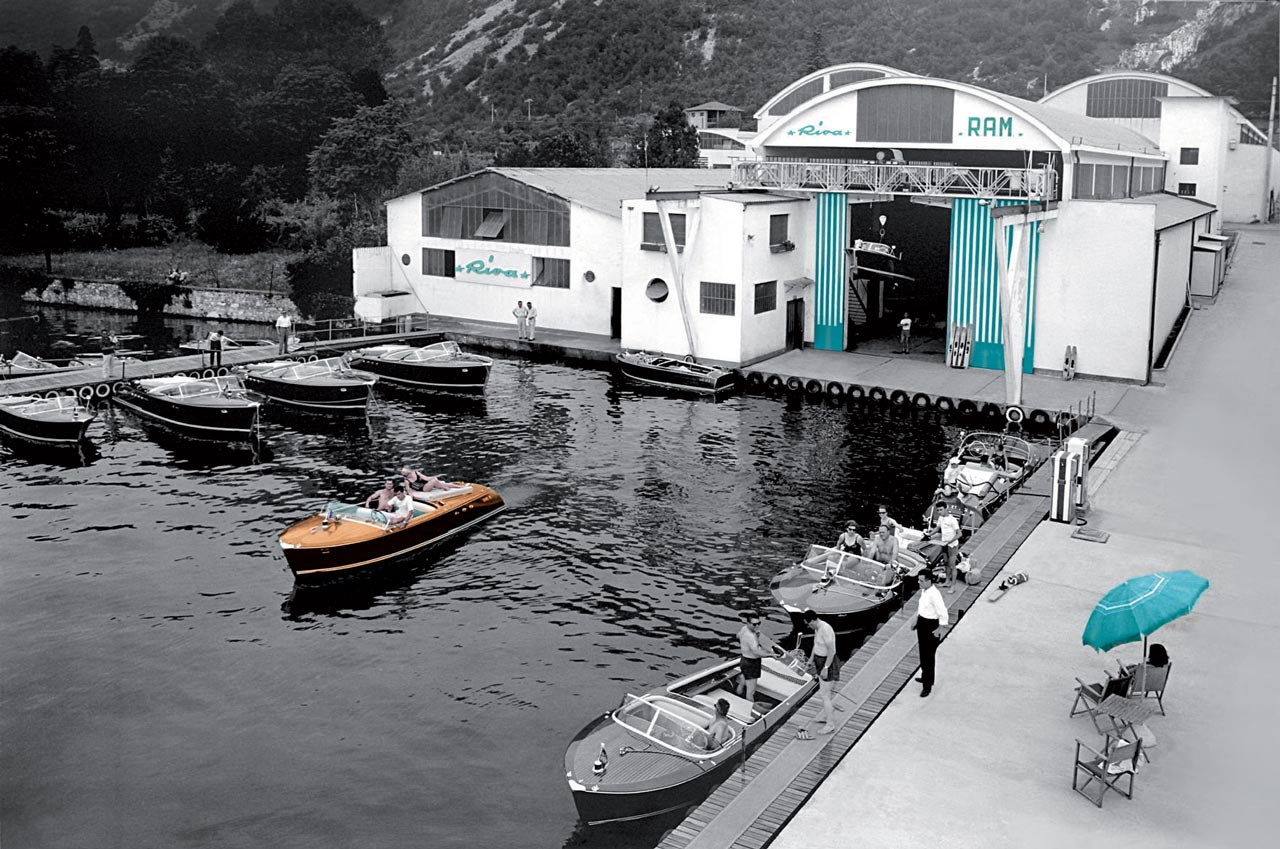Carlo Riva
Photo Archive Carlo Riva ©
Carlo Riva was born in Sarnico on 24 February 1922. He was a child of art because his great-grandfather Pietro was a shipwright who in 1842 migrated to Sarnico on Lake Iseo. His ability to repair and build wooden boats have been transmitted to his son Ernesto and by him to Serafino, a great enthusiast of motor boating. In the 20s and 30s the Riva inboard and outboard boats have written glorious pages: champions and brands occupied the sports covers of the world press. By breathing the thrilling atmosphere of racing, Carlo remained influenced and became increasingly passionate about boating. An experience that awoken his fervent imagination as a boy and fed his passion for shipbuilding. At the age of 16 he redesigned and improved the “BRUNELLA” racing hull with which the pilot Paolo Mora won the Tremezzo race in 1932.
Already in those years, the "impatient apprentice" is caressed by the idea of building pleasure boats in series, but with an artisanal style based on the American model. In 1939, at the age of 17, he designed the special hull of six motorboats on behalf of the Italian East African Government, destined to the shallow waters of the Ethiopian Ashenge and Tana lakes. However, the interlude of the war restrained and froze Carlo's dreams, ready to reignite at the first opportunity.
Basically I was born on a boat. At the age of three I had fun with a rowing boat, at the age of seven I was already familiar with the engines, bringing around my little sister Dafne. At ten years my duty was to clean up the boats of my father Serafino. Sometimes I ran away to go on the swing, but my father scolded me because my place was in the shipyard. As a kid I started designing racing boats and having ideas to innovate the shipyard.
The racing world
Like my father Serafino, I loved as well the exciting world of racing. With youthful enthusiasm, at the age of 17, I began designing competition hulls for some Italian motorboat pioneers. The dazzling victories of audacious drivers like Guerini, Sestini, Alquati, Mora, Pagliano, and many others - already in the far 1930s brought the name of the small shipyard of Sarnico to the stars.
The birth of the Riva shipyard in Sarnico
It was 1950 when the rudder of the shipyard passed into the hands of Carlo Riva. On October 3, 1954 the new large Riva Shipyard was inaugurated, the one that still bears the signs of its unmistakable style, of its sensitivity for shapes and colors, of its rational organization of spaces, functional for working in series on an artisanal base. Here were born the 4,098 mythical mahogany boats that have been able to outperform a prestigious brand such as the American one of Chris Craft. From now on, the new "must" is Riva.
Those that follows are years of feverish and tireless work. Anticipating the needs of Riva’s shipowners, within a few years of each other, were born Riva Boat Services for technical assistance and sales: the historic "R.A.M." of Sarnico, born in 1957, two years after the prestigious "Monaco Boat Service" of Monte-Carlo, which has exceeded more than half of a century, and later other offices spread worldwide. In parallel, Carlo invested in brand image and advertising with catalogues of which he personally took care of every detail because Riva means class, lifestyle, and everything must be at the top. He worked with the great photographer Federico Patellani to take care of the printing of the refined and exclusive Riva catalogue of 1956. He never missed an opportunity to take part at fairs and boat shows in Italy, in Europe and in America. He has always been a pioneer, indeed in 1952 at the motorboat show of Mello Prina in via Durini in Milan he exhibited a “Sebino” next to the cars surprising all the people. He created the same astonishment when he took part at the Miami Boat Show in 1959 with a Triton, a Super Florida and an Ariston or when he opened a Riva showroom in the Rockfeller Center of Manhattan in 1964.
But the "nautical pioneer" invested in the research of innovative materials, such as marine plywood, a technological invention that changed the history of boat’s construction, thanks to the collaboration of Remo Lodi, a great technician of Incisa of Lissone. Research method that is applied to all parts of the hull to achieve quality, durability and safety: from chrome plating to varnishes, upholstery, engines, screws, on-board instruments, each of which has its own interesting story, thanks to the design by Carlo Riva.
The engineer is also a forerunner of fiberglass. At the end of the 1960s, thanks to his far-sighted intuition, he understood that the new material was becoming popular in the nautical world. He directly faced the problem, giving shape, harmony and balance to the fiberglass. The first two models in fiberglass (1970-1971) with Bertram hull, the 20 ’Bahia Mar and the 25’ Sport Fisherman, 150 boats built and sold in less than two years, have the indelible signature of the engineer Carlo Riva.
I'll build boats my own way
I want to build boats my own way” I told my father, he was a conservative and I have to thank him for teaching me and transmitting me his passion for work. But I had a clear vision of how I wanted to manage production. I started in 1950 with six months of testing, I had to settle with what I had screws, paint and a bit of wood, it was the best day of my life.
The mahoganies D.O.C. of the reserve of Carlo Riva
Noble woods, with a silky appearance and unmistakable veins, resistant to use and weather conditions. Precious exotic essences that I personally selected in a maniacal way: Kaya Ivorensis, Sipo, Makore, Grand Bassam, Okumè, Iroko, Philippin Mahogany. But the most beautiful of all woods, for appearance, color and ductility and non-deformability is the Honduras cedar, particularly suitable for bridges, dashboards, and some interior finishes. Their fragrance spread in the air creating a pleasant sensation and a sort of revered respect to whom modeled them.
"It is still alive the memory of those fragrances that perfumed the shipyard” recall Lia and Pia
From Chris-Craft engines to Riva engines
“A fascinating story that began in 1952 with the first overseas trip to the Chris-Craft headquarters in Algognac, Michigan. I didn’t have enough money to import as many engines as Americans wanted. I invented a lie about Italian protectionism. At the end I signed to import six at a time, but for a total of 50. I came back with three things in my pocket, the passport, the plane ticket and three dollars.
Three years later we bought over a thousand engines. But I needed a higher quality, so in spite of myself, I left my friends at Algognac to enter to Chrysler’s house. We bought 600 engines, subordinating the contract to a series of modifications, in particular relating to marinization. But who made all the changes I wanted was Warren's Crusader Marine in Michigan in the person of the owner Mr. Calvin Connel. Have been made about a hundred changes, but at the end the lightest, most durable, quietest and most reliable Riva’s engines were born. They became the best available on the market.”
The Riva Boat Services
Sale, storage, maintenance, Riva needed assistance facilities, we built fourteen. It was easier than today. Less authorizations were needed, was enough buying the land, building a shipyard and an office and having trusted people. These people often didn’t have the financial resources and the best later on became themselves owners of Boat Service.
Fiberglass, another challenge
Since the beginning I understood that we would have had to deal with this American material, welcomed with strong prejudices. Plastic, plastic! Words followed by grimaces of disapproval from the old shipwrights. I commissioned two Bertrams from America: the smallest was a Bahia Mar of ‘20, already known in the States, and the ‘25 Sport Fisherman. I redesigned them with the typical Italian style and taste, mitigating the appearance of bare plastic with the warmth of wood in plain sight for the interior finishes. Dick Bertram was amazed when he saw the Genoa Boat Show in 1970: he hardly recognized his models. At the RAM of Sarnico there is still my Carla I, a Bertram "38 foot still perfect, belonged only to Dick and me. With this boat I traveled miles and miles to discover the Greek islands.
Riva Yacht Division
His unsatisfied desire to achieve new milestones pushed him at the beginnings of the sixties (1961-1964) to compete also in the construction of large steel displacement yachts, able to face the dangers of the open sea. In collaboration with the great Dutch shipyard "de Vries Bros - Shipyards" of Aalsmeer he built 7 legendary Caravelle, one of which, Serena, had recently been restored in the Netherlands. The "Riva Yacht Division" was born, which in 1970, for reasons of convenience, moved the construction of large steel yachts to Ancona at the C.R.N. later he established the "Carlo Riva Yachting Corporation" where have been produced the Marco Polo and Vespucci series, 8 steel specimens from 24 to 30 meters.
The Challenge of the steel’s motor yacht
In Holland I built eight boats: seven Caravelle and one Atlantic. They are steel ships realized by De Vries shipyards, I made them the way I liked them. I was sure they would have been a success for three reasons: firstly they were made in Holland among the tumultuous sea of the Baltics therefore with the hull already experimented for an optimal seaworthiness; secondly with Rolls Royce engines and thirdly for the Italian design. I had absolutely no doubts. A Caravelle today (2006 n.d.r.) is in Rapallo: it is the most photographed yacht in the Carlo Riva marine. But at a certain point I was tired to go back and forth from Holland, so I looked for a construction site in Italy and since 1970 in the C.N.R. shipyard of Ancona have seen the light the Marco Polo and Vespucci series, which can be considered real ships.
International Touristic Port Carlo Riva in Rapallo
Carlo Riva’s life is made of cutting-edge projects and new challenges and the International Touristic Port Carlo Riva in Rapallo is an example. Behind this impressive shipyard structure, one of the most practical and efficient of the Mediterranean, are hidden the creativity and solid expertise of this nautical entrepreneur, but also his tenacity, passion and will to do.
Following the example of the Port of Cannes made by his friend Pierre Canto, in 1971 Carlo Riva wanted to transport to the enchanting Gulf of Tigullio one of the pearls of the French Riviera. As all pioneering ideas, the ambitious project, worthy of the best nautical tradition, had to overcome an infinite number of obstacles and bureaucratic delays. After signing the formal concession contract, it took other three years, before being able to finish the works at sea of the first Italian touristic marine, today unanimously considered the "good lounge" of the international yachting industry, and other eight years to complete the ground infrastructures, including the realization of the public port, capable of 500 moorings.
But in the end Carlo Riva got what he tenaciously fought for so long.
Among the picturesque "Baia del Silenzio" of Sestri Levante and the magical bay of Portofino, surrounded by the lush green of the Rapallo hills and the intense blue of its sea, there is the Port Carlo Riva, along whose quays paved with porphyry pink, sailors can moor their boats from 6 to 40 meters in complete tranquility and safety, in addition to finding a network of ground services, technical and organizational assistance.
A port complex for 400 boats, in addition to transit places, quiet and sheltered from traffic noises, with access secured day and night. But above all, a place designed to make the life of shipowners easier and cruising even more enjoyable. In the two spacious and rational garages, equipped with the most sophisticated fire-fighting devices and adequate emergency exits, there is space for over two hundred cars. The shopping center, with 22 shops, restaurants and bars, the Yacht Club, the two workshops, the travel lift, the slipway and the self-moving crane for yachts up to 20 meters, make this harbor one of the best equipped, served of every comfort.
Due to the violent storm that hit the Italian Riviera last October 2018, the internationally renewed Port Carlo Riva was severely damaged. In the efforts to restore it to its original glory, the Riva Family is working closely with the local authorities in Rapallo to re-built it.
The International Port Carlo Riva in Rapallo: story of love and hate.
“It was the 10 July 1971 when the formal concession agreement was signed to build the first yachting marina in Rapallo, Italy. An ambitious project that immediately clashed with the resistance of a local reality at that time reluctant to innovations and not supported by clear legislative references. Basically my collaborators and I had to invent everything, and overcome many bureaucratic obstacles, but in the end, we managed to translate into reality an apparently impossible dream. It has not been easy.
At a certain point I also gave up and then resumed the management in 1983: little by little I repaid my debts and completed the works on the ground giving my marine an unmistakable style”.
RAM, the first Riva Boat Service created by Carlo Riva in 1957.
"Formidable and unique":This is how one of the most respected journalists of the time described the creation of RAM by Carlo Riva in 1957. Indeed, shortly after the construction of his new and ultra-modern Sarnico construction site in 1950, Carlo Riva continued his innovation policy with the creation of RAM - Motorboat Assistance Revision and his first Riva Boat Service. Located right on the shore of the lake next to the new Riva shipyard, RAM is the first maintenance and restoration center ever developed by a shipyard in Europe. With its organization, its precise and rigorous methods, its constant pursuit of quality at each level, RAM immediately became the international reference for the maintenance of Riva boats, from their launch to their accurate restoration. Over the years, RAM stood out as a Riva training center and an example to be followed for forty new Riva Boat Services, that will be created worldwide between 1957 and 1970. Since its inception, RAM still belongs to the Riva family, taking advantage of a unique continuity with extraordinary know-how and considerable experience with a constant passion for tradition and innovation.
Honours
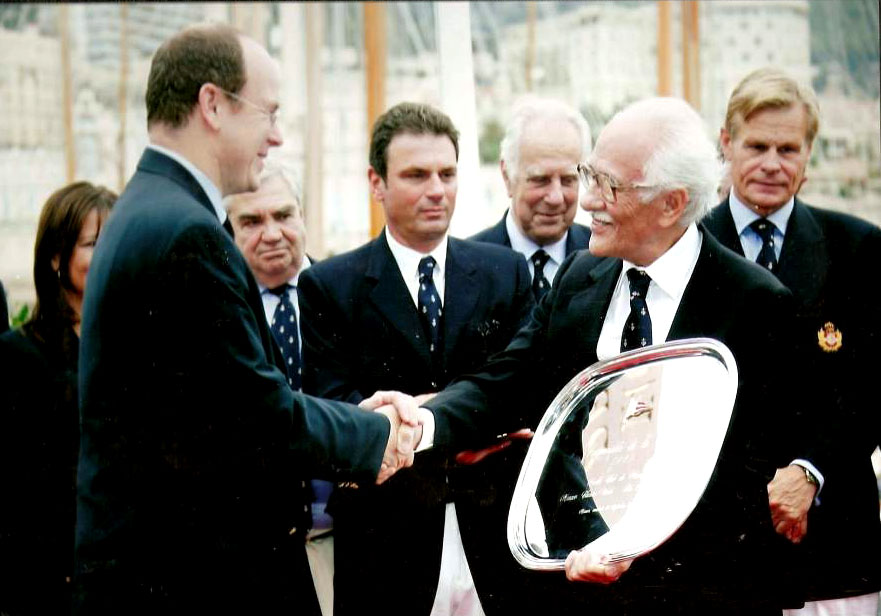
June 2, 1958:
CAVALIERE DELLA REPUBBLICA ITALIANA
© President Giovanni Gronchi
December 27, 1961:
CAVALIERE UFFICIALE DELLA REPUBBLICA ITALIANA
© Giovanni Gronchi e Amintore Fanfani
June 27, 1970:
CROCE D’ORO LATERANENSE
Pontiff: Paolo VI; Cardinale: Joannes Giantoni
June 4, 1988:
PIONIERE DELLA NAUTICA
Title conferred by U.C.I.N.A. (Unione Nazionale Cantieri e Industrie Nautiche ed Affini)
April 7, 1990:
SANMAURINO D’ORO
Mayor: Alessandro Arcangeli
May 16, 2003:
He was again awarded the title of PIONIERE DELLA NAUTICA dall’U.C.I.N.A.
September 16, 2005:
PERSONNALITÉ DE LA MER
Title conferred and delivered to him by H.R.H. Prince Albert II of Monaco

